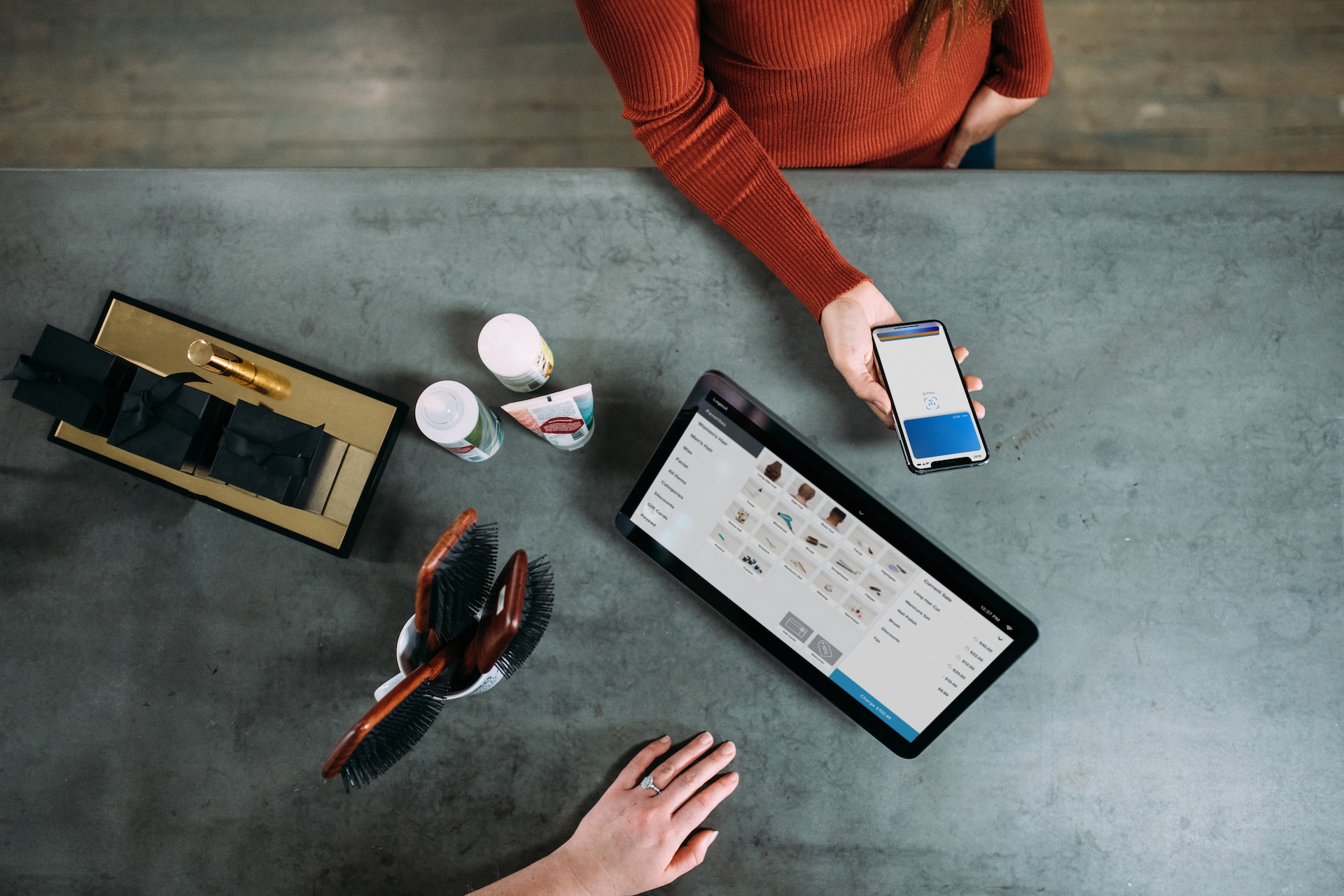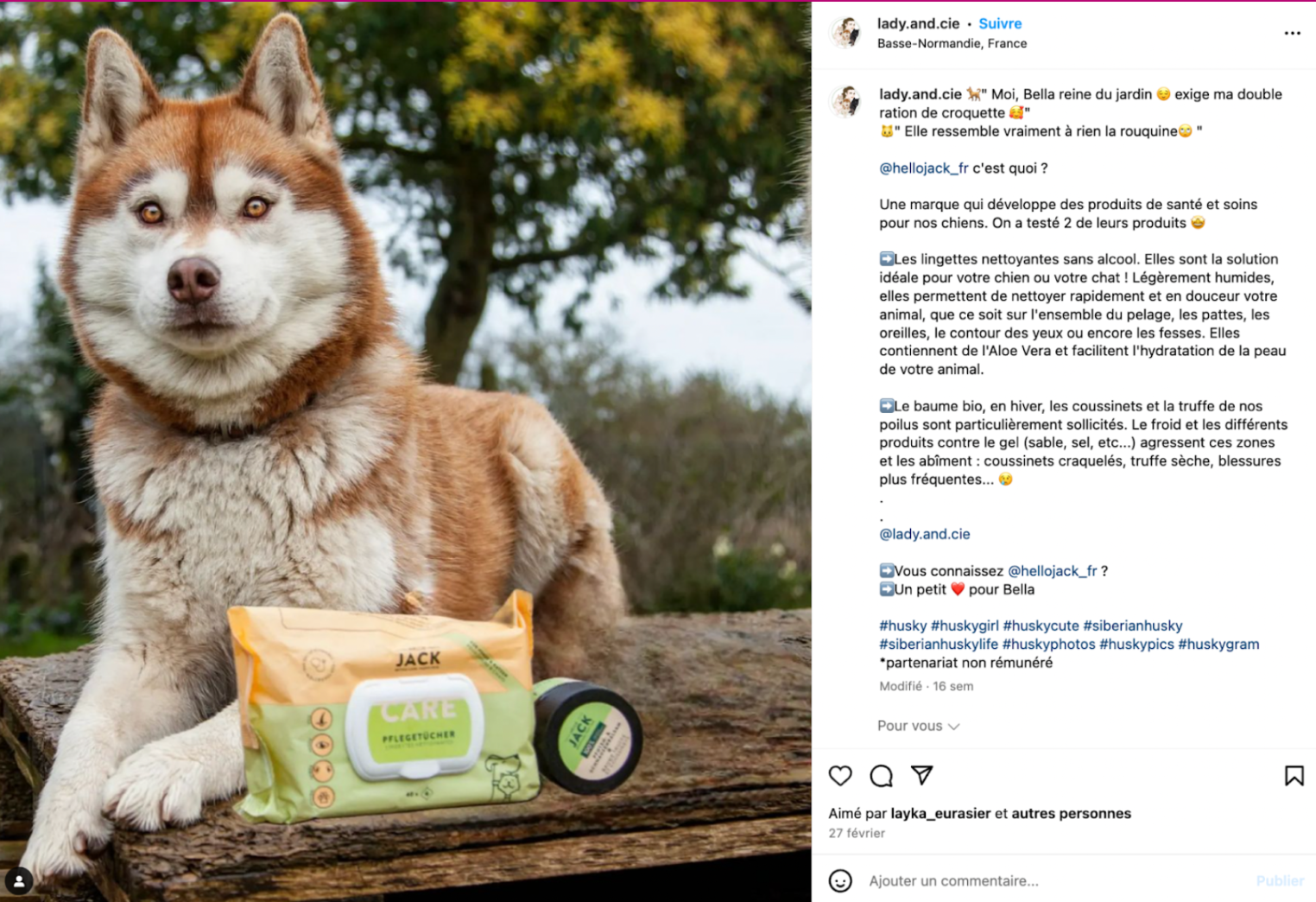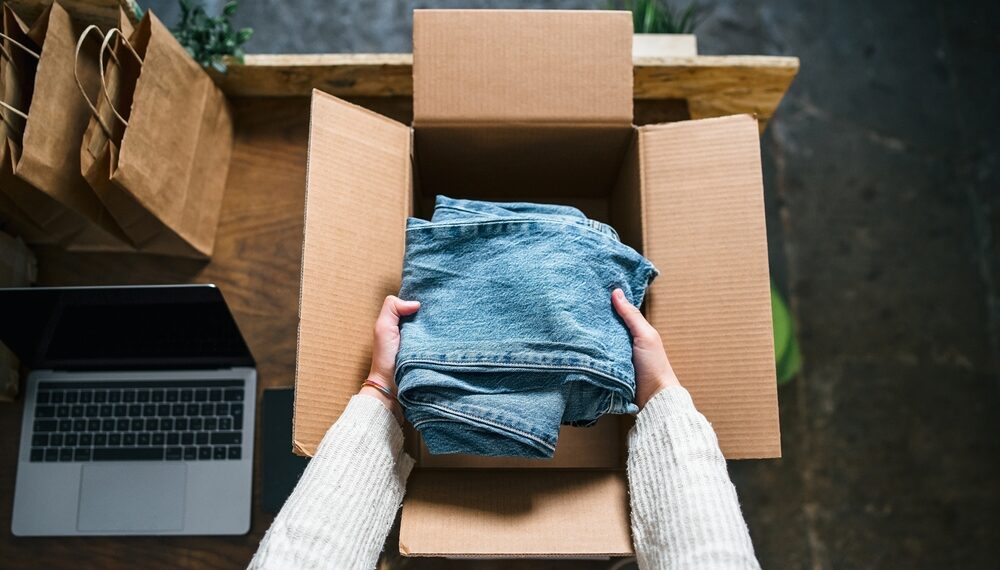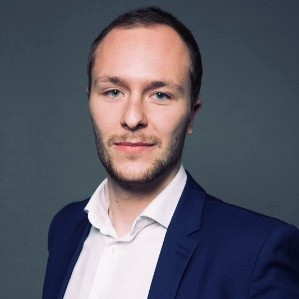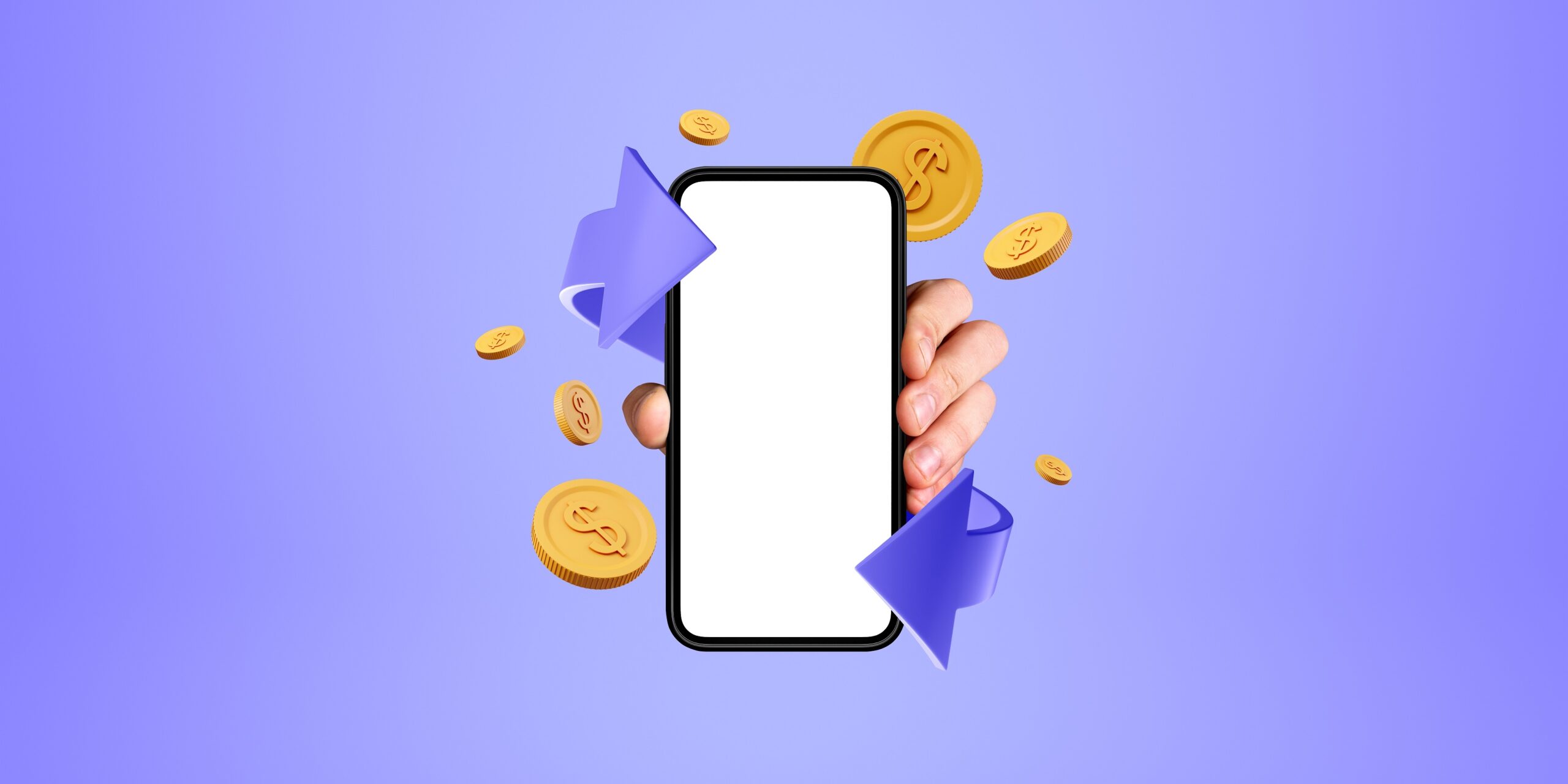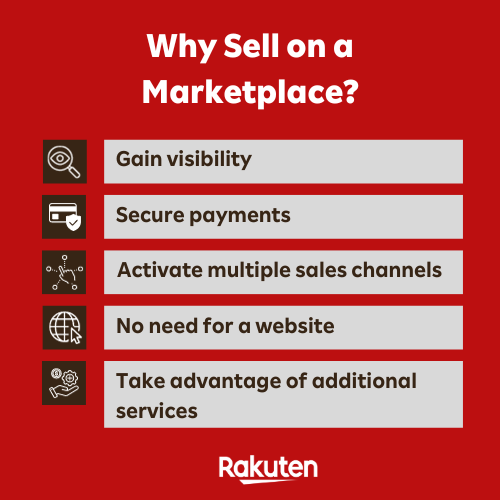Customer Satisfaction: How to Maximize It in E-Commerce
Customer satisfaction measures a consumer's satisfaction with a product, a service or, in a broader sense, a shopping experience. This metric is crucial for e-commerce. Find out why this is the case and how you can maximize it!
Why should you pay attention to customer satisfaction?
Customer satisfaction as a performance indicator
Customer satisfaction is a key performance indicator (KPI) in e-commerce. It directly reflects the quality of your products, but also of your entire interaction with customers (purchase path, customer service, etc.).
Measuring customer satisfaction allows you to understand your current performance or that of the near past, but also to anticipate it. This indicator can provide you with information about your customers' future actions: purchase intentions, word-of-mouth, etc
It is also an excellent way to differentiate yourself from the competition.
Maximize customer satisfaction to retain customers
If you also provide a satisfying user experience, you encourage your customers to buy from you again. A strategy that pays off for several reasons:
- The cost of retaining a customer to your business is estimated to be five times lower than the cost of acquiring the same customer.
- Your loyal customers are more likely to increase their average shopping cart. At Rakuten, our loyalty program members spend on average 40% more than non-members.
- A shopper who is already familiar with your products and shopping journey is more likely to complete their order, reducing cart abandonment.
Even if you sell products where the average purchase frequency is lower (e.g. large household appliances), you should maximize your customer satisfaction. If your customers are happy with their experience, they can spread positive word of mouth and attract new buyers.
How can you measure customer satisfaction in e-commerce?
Measure customer satisfaction with the CSAT
The CSAT, an acronym for Customer SATisfaction, is a score calculated from questionnaires sent to your customers. These are usually questionnaires with only one question and a limited range of answers. An example of a questionnaire could be:
"Are you satisfied with your purchase?" where the possible answers include the following:
- " Yes " or " No "
- A rating scale (e.g. from 1 to 5 or from 0 to 10)
- A satisfaction scale ("Very satisfied", "Satisfied", "Neutral", "Not satisfied", "Not at all satisfied").
To calculate the CSAT score, the number of positive responses is then compared with the total number of responses:
CSAT = (number of positive responses/number of total responses) x 100
The advantage of this indicator is its simplicity. With just one question, you increase the likelihood that your customers will answer your questionnaire. It is also easy to apply to different types of products.
On the other hand, the CSAT lacks detail : you know the percentage of dissatisfied customers, but you don't know why. Fortunately, there are other tools that can provide you with this information.
Measuring customer satisfaction with the Net Promotor Score
The Net Promotor Score measures the likelihood that a customer will recommend your products to others. It is based on a score from 0 (not at all likely) to 10 (very likely) that the customer gives in response to the question "Would you recommend our product to a relative?"
A distinction is then made between three categories:
- Critics (score between 0 and 6): dissatisfied customers who could damage your image
- Passives (score 7 or 8): satisfied but unenthusiastic customers
- Promoters (score 9 or 10): very satisfied and loyal customers who are involved in the development of your company
Calculation of the Net Promotor Score
The NPS score is then calculated by subtracting the percentage of detractors from the percentage of promoters. Example:
Out of 18 customers surveyed, 3 gave a score between 0 and 6, 10 gave a score of 7 or 8 and 5 gave a score of 9 or 10, so there are :
- 3/18 = 17% Critics ;
- 10/18 = 55% passives ;
- 5/18 = 28% supporters.
Your NPS is then 28 - 17 = 11
Interpretation of the Net Promotor Score
An NPS of over 0 is considered a correct promoter score. The number of customers who are willing to recommend your products to others exceeds the number of customers who spread negative word of mouth. However, be sure to take these critics into account, as they can severely damage your reputation.
An NPS of over 50 is a very good score, indicating a strong bond with your brand and a high level of loyalty. You are on the right track!
To obtain a more representative result, you can add further data to your calculation of the Net Promotor Score. Do you count more critics among certain groups of buyers? Are there an unusually high number of promoters for certain products? The possibilities are endless.
Measure customer satisfaction based on user reviews
The reviews that your customers leave on your website are a valuable source of information. Take the time to analyze these opinions and understand possible points of friction that emerge from the comments. Pay particular attention to recurring comments, as they often indicate an underlying problem.
However, be careful not to rely on this indicator alone. The majority are often silent and will not leave a review even if their experience is negative. Conversely, some comments written in the heat of the moment may exaggerate the actual problems. So be sure to maintain a critical approach and always supplement your analysis with other indicators.
Also remember to respond to your customer reviews! They are important signals that are sent to your other customers. 58% of French people and 70% of 15-24 year olds say they consult a customer review before making a purchase (source: Fevad 2024). A negative comment that remains unanswered is a bad signal for your potential buyers.
How to maximize customer satisfaction in e-commerce?
To guarantee your customers the best experience, you should pay attention to a few key points:
High quality products at the right price
This is the first parameter you should consider. Make sure you offer quality products with a good value proposition. Your products must meet the needs of your customers. To do this, it is necessary to address the right target groups. Define your target customers and develop an effective pricing strategy that will help you stand out from the crowd.
Pay attention to all aspects of your products (ease of use, durability, packaging...), nothing should be left to chance.
An intuitive customer journey
Nothing is more frustrating for a shopper than having to go through many tedious steps before they can finalize their order. A smooth customer journey is a key element to your success in e-commerce.
Whether you're selling on e-commerce or through a marketplace, make sure to make the purchase path as clear as possible. Add visual cues, reduce the number of redundant steps.
The quality of your product sheets is particularly important for this. Is all product information accurate and up to date? Are the call-to-actions easily recognizable? Does your index card contain customer reviews?
Efficient deliveries
Once your buyers have ordered their product, they can hardly wait to receive it. Excessively long delivery times, incorrect deliveries or lost parcels have a major impact on your customers' experience. With a fast and efficient logistics service, you can keep this friction to a minimum.
Also pay attention to your shipping costs ! 62% of e-shoppers abandon their order if the shipping costs are too high (source: Sendcloud study, 2023). So make sure that you offer reasonable costs that still allow you a sufficient profit margin.
Good customer service
Even with the best store and the best delivery service, mistakes happen and your customers may encounter problems. 5 out of 10 French shoppers contact customer service if they have a question or an update on their order or delivery (source: Essendex, 2023). So you need to make sure you have effective customer service to stand out from the crowd.
Pay particular attention to the following points:
- Responsiveness: this is the priority for 39% of e-commerce shoppers (source: Qualimetrie, 2022). Your support must respond quickly and accurately to your customers' requests.
- Personalization: No one wants to be seen as a mere number. Your customers need to feel listened to, recognized and, above all, unique! Make sure you always mention their name and offer them personalized services in return. Retrieving accurate data about your customers (purchase history, preferences, etc.) allows you to respond precisely to their needs.
- Customer autonomy tools : Most of the time, your customers will want to find the answers to their problems themselves. Make sure you offer a comprehensive FAQ (Frequently Asked Questions) listing recurring requests. Your customers will save time and your teams can focus on more complex problems. A win-win situation for everyone!
Apart from solving problems, your customer service is the direct link to your customers. It is therefore the reflection of your company to them. Returns management, collecting customer opinions, creating exclusive offers and promotions... each of these steps can help you stand out from the crowd and increase your customer satisfaction!
Rakuten France, a platform at the service of customer satisfaction
As you will have understood, customer satisfaction in e-commerce must be at the top of your list of priorities. At Rakuten, this is one of our core commitments and we strive every day to improve shoppers' experiences. Learn how Rakuten can help you maximize your customer satisfaction:
An intuitive and well-rehearsed shopping journey
Rakuten offers its buyers a seamless shopping journey. On our Marketplace, each product card contains all of our sellers' listings for a specific item. An efficient way for a buyer to compare prices without having to leave the product card. The customer can then add the items of their choice to their shopping cart and submit their order with just a few clicks.
Our platform benefits from the many years of expertise of our teams. What is our goal? To deliver an optimal user experience. And our 13 million loyal shoppers have understood that.
As a seller, you have the opportunity to create your own e-shop on our platform to keep control of your brand image and personalize your customer journey.
Support from your customer service
Rakuten offers its sellers comprehensive and dedicated customer service support. If you are a seller on our platform, we provide you with a range of dedicatedtools for your online store.
You also receive first-class support thanks to the internal messaging service, which helps you manage and optimize your customer service.
Rakuten Fulfillment Network, for efficient omnichannel logistics
Finally, our Rakuten Fulfillment Network service allows e-commerce merchants to outsource all their logistics tasks: packing orders, managing returns, monitoring stock levels... we take care of everything!
With this service, you benefit from :
- Lower logistics costs thanks to our fixed price. Our customers save an average of 25% on their logistics costs;
- A flexible service for customized logistics;
- A centralized area to manage all your logistics with just a few clicks;
- A high-quality service for your customers through fast deliveries and efficient returns management. 99.8% of orders received before 2pm are delivered within 24 hours.
Barcodes: Why They Matter in E-Commerce
Whether you're buying or selling a book, a telephone case or a vacuum cleaner... All these products have one thing in common: the presence of a barcode. These symbols are made up of lines, spaces, characters, and numbers. Ubiquitous in our daily lives, they are also indispensable in e-commerce, particularly for selling your products online on a marketplace like Rakuten.
In this article, we explore the crucial importance of barcodes, how they work and how to use them. Do you want to sell your products online? Then this article is for you!
What is a barcode?
Barcode definition
Bar codes are printed on product packaging. It consists of thin parallel bars that allow data to be identified and displayed using an optical scanner. This data is used for information and marketing purposes, to track the traceability of a product throughout the supply chain (procurement, inventory management, in-store or online purchase tracking, etc.).
The code is materialized by a series of 13 digits and is known as the Global Trade Item Number (GTIN). In other words, this code is a product's identity card. Thanks to this unique codification, all product information can be identified: composition, country of manufacture, manufacturer's identity..
For the record, the barcode turns 70 in 2022! The first patent was filed in 1952 by two American engineers seeking to automate the registration of manufacturers' products. Twenty years later, the technology was developed for its first deployment in supermarkets. And today, the barcode is also indispensable in e-commerce and virtual marketplaces like Rakuten. But you still need to know how it works.
How a barcode works
Let's start by deciphering the composition of a GTIN/EAN barcode (European Article Numbering): this is the most common type of barcode, used for products sold internationally.
The first digits generally indicate the product's country of manufacture (or, in some cases, the country where the company's head office is located). The 3rd to 7th digits indicate the manufacturer number. The 8th to 12th digits indicate the item number. Then the last digit represents the check digit confirming the barcode.
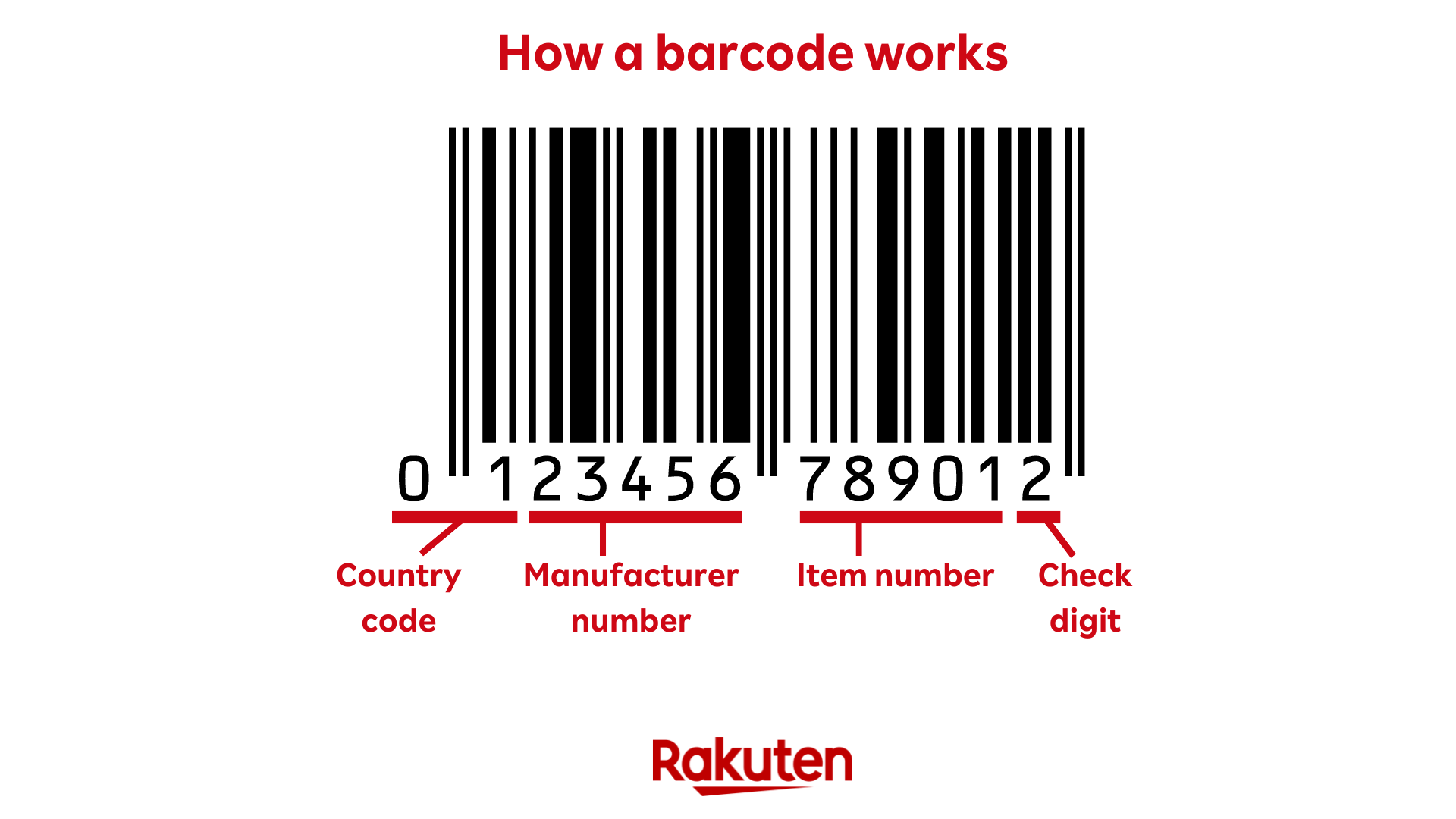
Among the best-known barcodes are :
- UPC barcodes: mainly used in North America.
- 128 barcodes: used for logistics and internal tracking, they include silence sections, a start character, an FNC1 function code, a control character and an end character.
- 39 barcodes: used for marking medicines and certain industrial products. These codes can be up to 43 characters long, with symbols at the beginning and end.
Scanners read and interpret these number sequences, to track the traceability of an item. But do you know why this data is important, especially for e-tailers?
The importance of barcodes in e-commerce
Here are the advantages of barcodes:
- Precise, rapid stock tracking : thanks to these symbols on products, you can improve your inventory management. This helps reduce human error and improve internal efficiency.
- Better management of shipments: by facilitating product traceability (from the warehouse to the end consumer), barcodes enable better management of returns or complaints.
- Speeding up the logistics process: using a barcode is particularly useful for limiting data-entry errors and speeding up the sales process (and time-to-market!), especially on a marketplace like Rakuten. Barcodes provide information almost instantaneously, without the need for research. It also makes restocking easier.
- Enhanced compliance: barcodes are a lever in the fight against fraud, as the system prevents embezzlement. E-merchants who buy their products from suppliers can have better control over what they are buying.
- Improved natural referencing: Google considers the GTIN/EAN to be a unique key for verifying product identification. By adding this barcode to the product data sheets on your e-commerce site or marketplace, Google enhances the referencing of your products. Internet users will find them more easily. Practical for boosting your online sales!
- Increased customer loyalty: this barcode system has enabled the development of loyalty cards, initially in physical stores, but now also online. Thanks to barcode data tracking, online stores can keep track of shoppers' preferences, and offer them personalized loyalty operations (such as promotional codes).
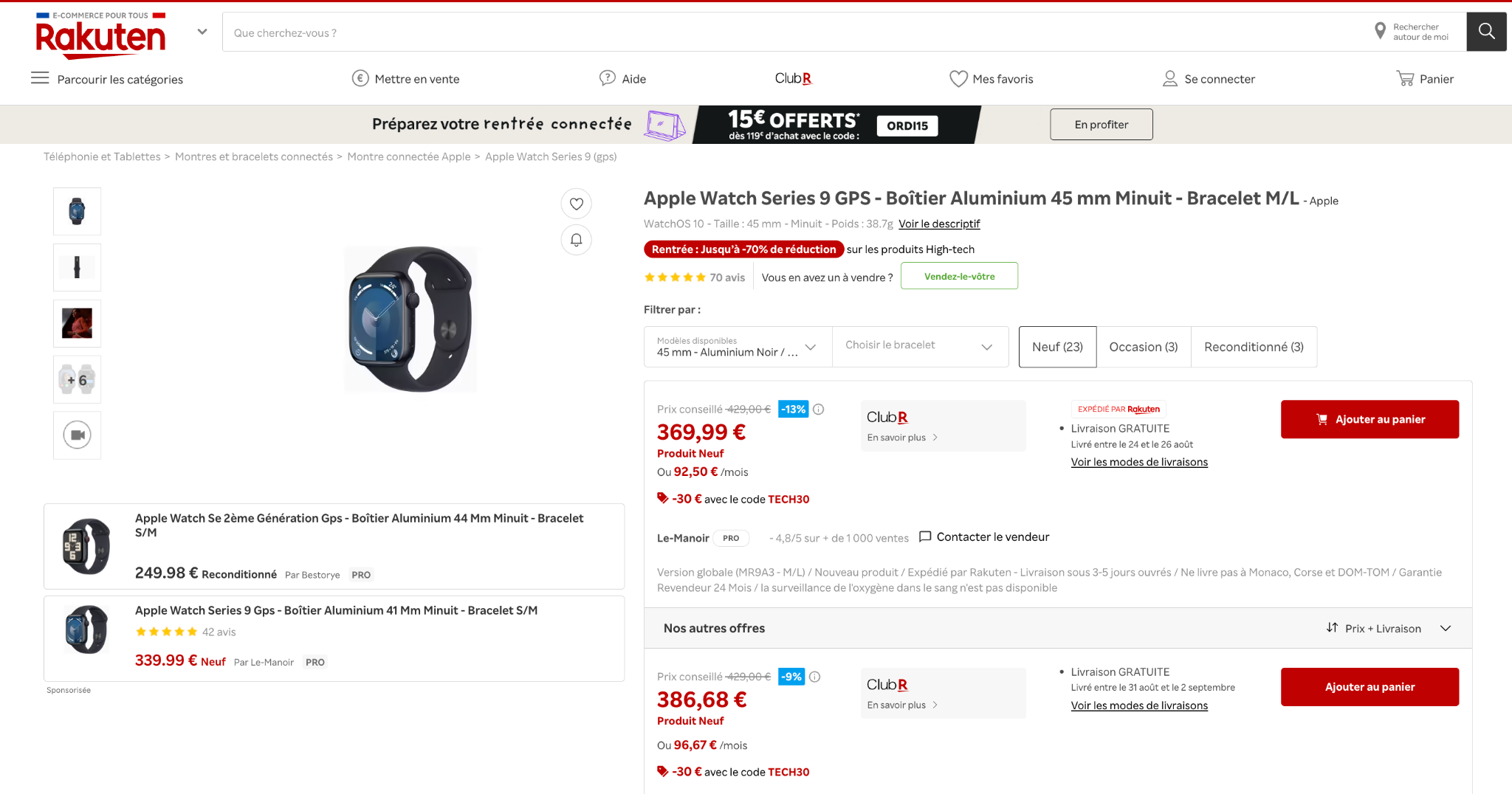
Let's find out how to use this coded system to sell your products in the marketplace.
Using barcodes on marketplaces
Would you like to sell your products on a marketplace like Rakuten, targeting 13 million regular buyers? The presence of a barcode on your items is essential. In terms of standards and requirements, marketplaces like Rakuten France require a unique GTIN/EAN barcode for each product. This is a security feature, to guarantee the precise identification of products and verify their authenticity. In this way, we can protect buyers from counterfeit products and guarantee the quality of their purchases.
What's more, the use of barcodes can improve the SEO and visibility of your products on the platform: ideal for increasing sales and boosting your growth!
They can also improve product catalog management, by grouping similar offers from different sellers on the same product sheet. Internet users benefit from a better user experience: they can compare prices and purchase options, before making their decision.
So, are you ready to take action? Here are a few tips for getting started on a marketplace like Rakuten:
Tips to add barcodes on a marketplace
- When creating your product listing, you'll need to enter a product code such as EAN/UPC/ISBN (GTIN), depending on the type of product concerned.
- If your item doesn't have a barcode, it's possible that the database of products available on Rakuten contains an identical item. Use the "Search" function to find it. If you find this item in the results, open the file, check that it's exactly the same product you're selling, then click on "Sell yours". Be sure to comment on any differences with the description in the listing.
- If your barcode is not recognized when you enter it, try entering all the digits without spaces or dashes. For CDs, DVDs and video games, the code is a unique number, often with 13 digits. If there are only 12, add a 0 at the beginning. For books, an ISBN number and an EAN13 code can be found on the back or inside the book. Rakuten is able to recognize both: enter one or the other, without spaces or hyphens.
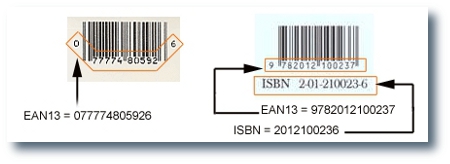
To create product sheets that convert, filling in the barcode is the first step. Now discover the next steps. Here are the 17 criteria for creating high-performance product sheets:
How do I create a barcode?
Step 1: become a GS1 member
To create a barcode for one of your products, you must first become a member of GS1 France. This non-profit organization is responsible for allocating barcodes in France. Once on the GS1 website, fill in the form with your details (business e-mail, company details, etc.).
Depending on your turnover, you'll then have to pay a registration fee to be able to register your barcodes. These fees include:
- An entry fee, paid on registration.
- An annual fee, paid each year. Membership is renewed by tacit agreement. If you no longer wish to use barcodes, you can
The membership fee depends on your company's sales. For example, it is :
- 99 € for annual sales of less than €50,000 (then €99 each year) ;
- 177 for annual sales between €500,000 and €1 million (then €177 each year)
Good news: this fee is fixed, regardless of the number of barcodes generated. Even if your catalog is very extensive, you'll pay the same price for it.
Step 2: Use a barcode generator
Once you've finalized your membership, all that's left to do is generate your barcode. First, choose the type of barcode that best suits your needs. For sales in Europe, the most common format is EAN-13.
Then go to one of the many barcode generators available online. You'll then need to enter a GTIN code created by GS1. You can generate these codes from your customer area on this platform. Once the code has been generated, you can download it and use it on the e-commerce site or marketplace of your choice. And that's it!
Good to know: GS1 France offers its own barcode generator. Handy for retrieving the information you need directly!
Use barcodes to sell on Rakuten
Now you know the definition, operation and use of a barcode in e-commerce or marketplace. A veritable identity card for an item, this type of code is essential for efficient management of your e-shop. Not only does it ensure product traceability and authentication, it also enables you to better manage your product inventory,improve your online natural referencing and optimize the user experience.
On a platform like Rakuten, the presence of a barcode on your items is mandatory. Far from being a constraint, this system is actually beneficial for our 7,000 professional sellers: once the barcode of their products has been entered on their e-shop, they can sell their products to Rakuten's 13 million loyal and regular buyers.
Would you like to increase your sales easily? Join our marketplace today:
Fulfillment costs: How to measure and reduce them in e-commerce?
Whether you decide to handle it yourself or outsource it, e-commerce fulfillment has a cost. A cost that you obviously try to keep as low as possible, while maintaining your attractiveness at its highest level to attract more potential buyers.
In this article, we'll take a look at the main factors impacting your logistics costs, along with our tips for reducing your logistics budget without cutting quality!
What are fulfillment costs?
Fulfillment costs, or logistics costs, are all the expenses incurred by a company in managing its products, such as storage, order preparation and delivery.
These costs are crucial to a company's overall strategy, as they directly affect customer satisfaction, market competitiveness and profitability. However, they represent a major expense item, especially for e-commerce companies, estimated at around 11% of a company's sales.
What are the logistics costs involved in e-commerce?
Goods storage, order preparation, parcel dispatch... Find out below about the main costs to consider, whether you manage all these factors in-house or via a logistics provider:
1. Fulfillment costs for product storage
It's generally one of the highest costs in any sector.
Depending on the quantity of merchandise in your possession, you'll need to find the right warehouse, manage its routing, reception and shelving. Warehousing costs include :
- Rental or depreciation of storage space (if you rent or own)
- Maintenance of the site and the equipment it requires
- Insurance to protect your products from accidents that may occur on the storage site
In addition, there may be other costs, such as taxes on the space or warehouse management software.
All these logistics costs vary according to warehouse location, capacity in m3 and storage time.
2. Order-picking fulfillment costs
Your logistics costs include those associated with order preparation. These include :
- item picking - also known as "picking" - and
- sorting according to destination
- packaging
- pre-shipment inspection of your products.
This preparation is a key stage in logistics, as it has a direct impact on service quality and speed.
3. Transport fulfillment costs
Another point that can have an impact on your budget and the selling price of your goods is the cost of transporting them.
The faster your transport, the higher the price, and this can have an impact on the delivery costs of your products.
Delivery is one of the factors most closely watched by consumers. Reducing delivery times as much as possible is a key challenge for boosting your business.
4. Fulfillment costs linked to customer service
Product lost, damaged during shipment, not conforming to the advertisement, management of customer returns... The more you sell, the greater the risk of imponderables. That's why it's essential to provide quality after-sales service. Quality comes at a cost, which is sometimes difficult to reduce without losing efficiency and responsiveness.
5. Insurance
Insurance is essential for all retailers and e-merchants, to protect your merchandise in the event of theft, breakage or loss.
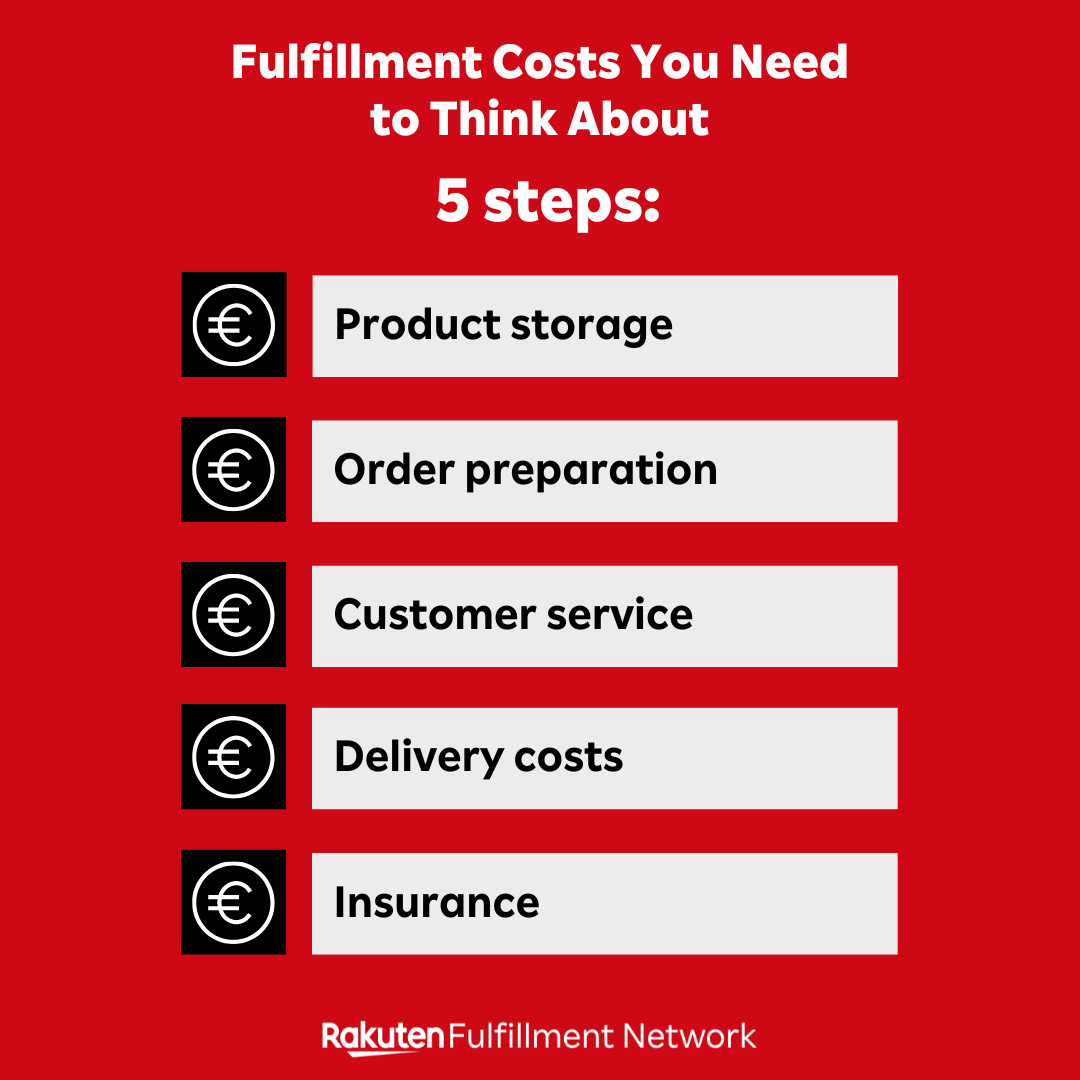
How much does your logistics cost?
Are you spending too much on logistics?
According to a study conducted by Supply Chain 24/7, the average logistics cost for a company is estimated at 11% of sales. This estimate is growing every year, due to the ever-increasing budget being invested in delivery times, a key factor in retailers' efforts to meet the expectations of consumers now accustomed to receiving their orders ever more quickly.
Over 50% of logistics costs are allocated to delivery management. The rest is shared between good storage, order preparation, after-sales service and insurance.
To increase your company's profitability, you need to find the right balance between your e-commerce logistics budget and your customers' expectations. A satisfied customer is a repeat buyer. It's all about pampering them, as long as you don't jeopardize your business by doing everything you can to seduce them. Hence our next question:
How can you reduce your fulfillment costs while taking into account consumer expectations?
There are several easy-to-implement sales tips designed to help you in your cost-cutting endeavors. Here they are:
1. Optimize inventory management
The more goods you store, the higher your storage costs. And vice versa. Beware, however, of relying on a minimum amount of stock in the warehouse, which multiplies the risk of stock-outs. The right logistics strategy is to define a minimum stock level that you must always have in your warehouse.
Below this threshold for your products on sale, replenishment is the order of the day.
This minimum stock must always meet demand, and take into account major one-off shopping season events such as Sales and Black Friday. It must also allow sufficient time for replenishment.
2. Increase the average basket
By increasing your customers' average basket, delivery and logistics become less expensive. One tried-and-tested strategy is to offer free delivery on minimum orders.
According to the French Institut National de la Consommation (INC), by 2022, 58% of shoppers will have added one or more products to their basket to reach this psychological threshold and benefit from free delivery.
3. Optimize your product packaging
By reducing the size and weight of your packaging, you can have a direct impact on the cost of storing and transporting your products, especially if you manage to get your products into your carrier's lower price bracket.
4. Outsource your e-logistics
Saving time and money is a dream goal for many companies. One of the best ways to achieve this is to outsource logistics. And preferably to a single service provider, to cut costs considerably.
By opting for our Rakuten Fulfillment Network method of outsourcing your e-commerce logistics, you are choosing a single partner to handle every stage of your supply chain: I want to reduce my logistics costs
Sales Seasonality: Anticipating Sales Peaks and Calculating Your Seasonal Index
Do your sales fluctuate from month to month? Nothing could be more normal. All businesses experience sales peaks and troughs at certain times of the year. This is known as sales seasonality.
Whether you sell physical products or services, whether you operate solely on e-commerce or have your own store: you're affected by the concept of sales seasonality. Weather, vacations, commercial highlights... many parameters affect your sales strategy.
How can you anticipate these peaks in demand by calculating your seasonal coefficient? How can you maximize growth opportunities, thanks to sales seasonality? Find out all the answers in this article.
I. Understanding Sales Seasonality
What is sales seasonality? Definition
Sales seasonality is an event that occurs several times a year. It refers to the fluctuation in demand for a product or service throughout the year. When a company experiences this intense increase in sales activity, it is referred to as a "sales peak".
All companies are affected by these cycles, which impact on their marketing and sales performance. There are many factors influencing sales seasonality:
- Seasons & weather;
- Vacations;
- Cultural events;
- Annual French or foreign festivities;
- Commercial highlights (sales, Black Friday, etc);
Some events are unforeseen, such as natural disasters or the Covid-19 crisis, which disrupted sales of certain products: hygiene and cleaning products, essential items... Meanwhile, e-commerce spending increased by 13% during the health crisis.

Source: Kantar e-commerce barometer
In addition, other events can be anticipated to maximize business growth during these peaks. Ready to explore some examples?
Some examples of sales seasonality
Certain major events or business dates dictate sales seasonality. For brands, it's essential to be aware of them, so as to capitalize on these periods.
By anticipating these key dates and trends, it's easier to anticipate sales forecasts... And to increase sales, market share and growth. All the while, making informed business and marketing decisions to effectively support this growth. For example, in the event of a sales peak, have you considered the strategies to be implemented to increase the average basket?
In an increasingly competitive business environment, this strategy is essential! Here are a few examples of sales seasonality, to give you a better idea of the concept:
- For florists, the two biggest sales holidays are Valentine's Day and Mother's Day. Every year, these professionals can generate up to 30% of their sales on a single day!
- In the outdoor hotel market (such as campsites), 85% of bookings are concentrated in the 6 weeks of summer.
- As soon as spring arrives, garden products are in demand. The milder weather invites customers to spend more. Amour Buidine (Sales Manager at ManoMano.fr) told Le Figaro: "16% of sales in this segment are made in April, compared with 3% to 4% between November and February. The same applies to the Internet: we triple our sales of swimming pools and other landscaping products from the first to the second quarter".
- During the soccer World Cup, the market for TV sets increases dramatically. This was notably the case in 2022, for the World Cup in Qatar. Guillaume Rault (vice-president of Samsung Electronics) confided in a Challenges interview : "There was an upturn in September in terms of quantity. In October, this was reinforced by an increase in market value. We're seeing double-digit increases. Some weeks are 28% or 35% up on last year. The World Cup should enable the TV market to sell 250 to 300,000 more pieces!"
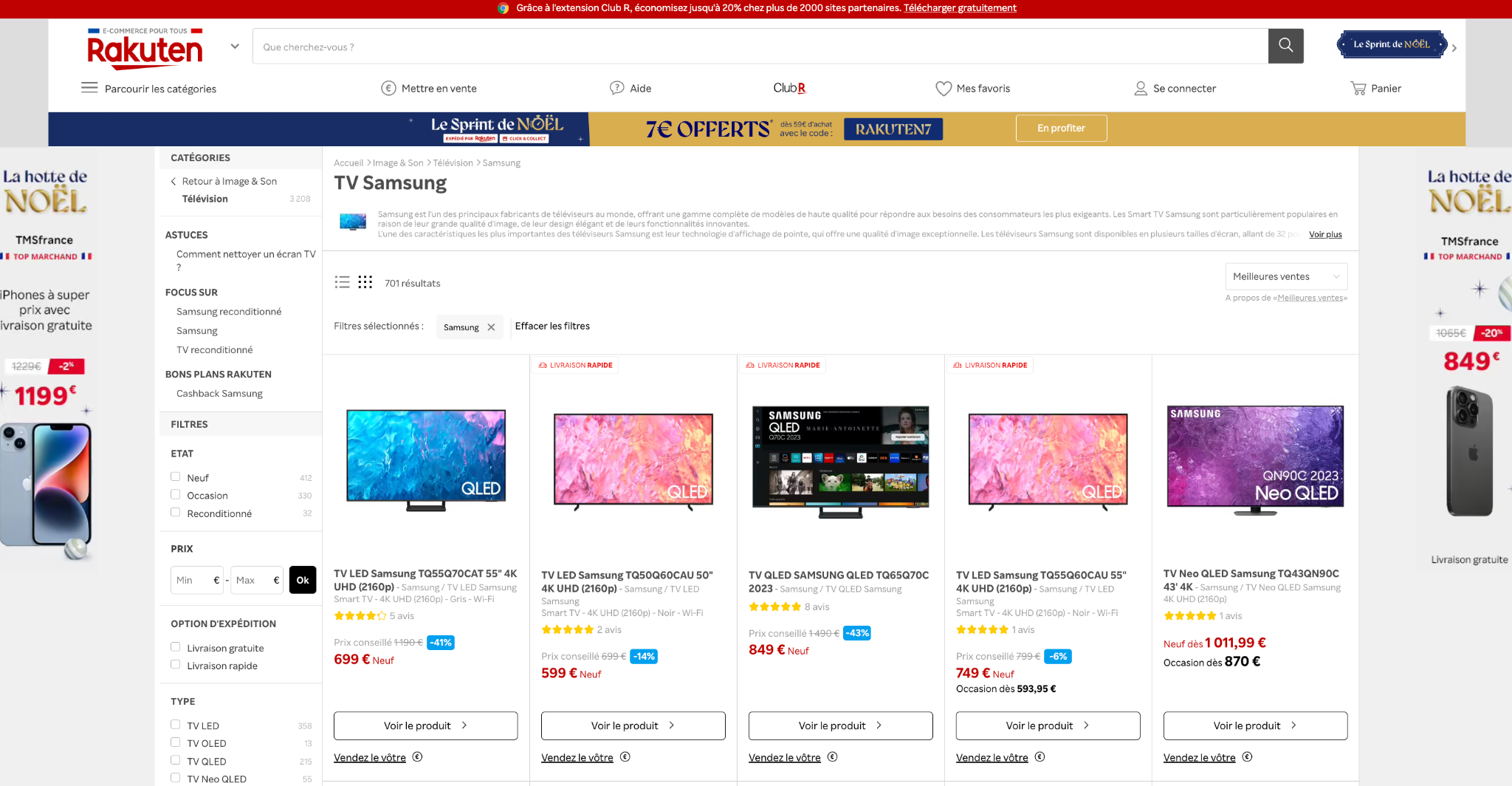
You've guessed it: sales seasonality affects every brand on the market, at different times of the year, and according to different criteria of influence. The challenge for brands? To anticipate sales peaks, in order to better manage their supply chain, as well as their marketing and sales strategy.
II. How to anticipate sales peaks?
To identify trends in your market and anticipate sales peaks, here are 3 best practices:
1. Analyze your historical data
Have you tracked and measured your key performance indicators (KPIs)? If you've already launched your business (such as an e-commerce site), it's essential to examine the past, in order to prepare for the future.
So, do you know what your monthly sales are? What are the seasonal trends? How do the average consumer basket, number of orders and conversion rate evolve over the months? All this quantitative data will help you better understand and anticipate sales peaks.
2. Identify local, seasonal and national events
Do you want to prepare for seasonal sales trends? Think about listing all the events that may affect your company, or the market in which you operate. More commonly referred to as a "chestnut", these are the key dates of the year that can influence your marketing and sales strategy.
For example, they could be sales periods, school vacations, sporting events, trade fairs, national celebrations... Position them on an internally shared calendar, so that all teams are aware of them. From the marketing department to product managers and sales staff.
3. Adapt your inventory and human resources
Finally, after analyzing your historical data and identifying future key calendar dates, here's our last tip: adapt your merchandise inventories, as well as your human resources. When demand peaks, your priority is to satisfy your customers. To achieve this, avoid stock-outs. Having the right quantity of goods in stock is a matter of preparation, several weeks (or even months) before the busiest periods.
Then, to deliver a memorable customer experience, don't underestimate the human factor: do you have the necessary in-house team to cope with the rush? In store as in e-retail, anticipate recruitment to guarantee a smooth customer experience.
III. Calculate the seasonal coefficient
To obtain the most accurate sales forecasts possible during seasonal peaks, we need to monitor a specific indicator: the seasonal coefficient.
The seasonal coefficient is a numerical indicator that can be calculated on a weekly, monthly or quarterly basis. It represents the ratio between the actual performance of a product or service during a specific period and its average performance over a longer period.
Its calculation highlights the potential of one period (compared to another) for the sale of a product. Thanks to the seasonal coefficient, you can define whether or not a moment can be considered "seasonal" for your consumer sales.
Here are 3 situations in which it's a good idea to calculate the seasonal coefficient, along with the appropriate formula:
1. Analyze the seasonality of the year's sales
The seasonal coefficient helps you identify the weight of sales during a given period in your company's annual sales. Thanks to its calculation, you can anticipate the marketing actions to be deployed at the next sales peak... And evaluate the effectiveness of the previous action plan put in place.
Here's how it works:
Sales for the month (or defined period) / total sales for the year
Let's take the example of a bicycle accessories e-commerce site. In 2023, the company sold €30,000 worth of products, including €6,700 in January 2023 (corresponding to the winter sales).
Seasonal coefficient = 6,700 / 30,000
Seasonal coefficient = 0.223
January 2023 therefore has a seasonal coefficient of 0.223. This is always rounded to 3 decimal places.
2. Compare seasonality with previous years
Let's go back to the previous example. Now, the e-commerce site selling bicycle accessories wants to know its seasonal coefficient in relation to the two previous years, and track its evolution.
Step 1: calculate average annual sales over the last two years.
22,000 (in 2021) 27,000 (in 2022) = €49,000
49 000 / 2 = 24 500 €
Average annual sales are €24,500.
Step 2: Calculate average monthly sales over the last two years.
4,800 (in January 2021) €5,500 (in January 2022) = €10,300
10 300 / 2 = 5 150 €
Average monthly sales are €5,150.
Step 3: calculate seasonal coefficients for each month
To do this, let's take the average monthly sales figure and divide by the average annual sales figure
5 150 / 24 500 = 0,210
The average seasonal coefficient over the previous two years is 0.210 in January. If we compare this with the seasonal coefficient for January 2023, we see a clear increase in sales, and therefore growth. A good sign for the company's performance!
3. Calculate future sales forecasts
The seasonal coefficient is the ally of forecasting. It also provides an accurate forecast for the coming year. From the monthly coefficients calculated, you can determine the sales forecast for the months of the coming year.
Let's return to our previous example. To calculate sales for January 2024, the calculation is as follows:
Sales for 2023 x seasonal coefficient for January 2023
30 000 x 0,223 = 6 690 €
Forecast sales for January 2024 will therefore be €6,690.
This calculation is based on a linear sales forecast. But be careful! Other parameters may influence seasonal forecasts upwards or downwards.
Our advice? Once you've made your calculations, always compare actual monthly and annual performance with your estimated forecasts. These analyses will enable you to adjust your marketing, stocking and human resources strategy accordingly.
And if you need a helping hand to refine your forecasts and boost your sales performance... Rakuten France is at your side. Here's how.
IV. Rakuten France: your ally in seasonality management
Yes, sales seasonality is an evolving trend, for all players in the retail industry. But here's one thing that never changes: our presence alongside marketplace sellers throughout the seasons. Over 12,000 professional sellers are active on our marketplace. To help them win over our 12 million customers, here's what we're doing:
- Analytical tools: from their dashboard, Rakuten France sellers benefit from advanced analysis tools. Thanks to these tools, they can visualize and understand all their sales data. The ease of use of the analysis tools means that seasonal trends can be identified at a glance... Perfect for adjusting your sales strategy!
- Targeted marketing strategy: from Rakuten France, you can set up targeted marketing campaigns for consumers, based on identified sales peaks. Is there a season when your e-shop needs to boost sales? Maximize your visibility to customers by following our recommendations.
- Inventory management: this is a priority for all e-tailers aiming for growth. To make this easier, you can integrate data from your Rakuten France e-shop into your inventory management system. This makes planning more precise. Ideal for anticipating your next sales peaks.
Now you know how to understand sales seasonality, calculate your seasonal coefficient and anticipate future peaks. Our final piece of advice? Don't wait for the next acceleration period to make the best decisions! Join our marketplace and effectively develop your online business!
What is e-commerce fulfillment?
Having discussed the advantages of outsourcing your e-commerce logistics and relying on 4PL logistics to support you on a daily basis, we’ve decided to explain in detail a concept that is stillunclear to some:fulfillment.
In this article, we’ll explain the definition of fulfillment, its benefits and why our solution, the Rakuten Fulfillment Network, could well revolutionize your approach to e-commerce.
Definition of fulfillment
Fulfillment is an English term meaning “realization” or “execution”. In e-commerce, it is used to designate all the logistical operations that a merchant may encounter. Worth knowing:
1/ Inventory management
Anticipating future orders based on the shopping season, replenishing stocks accordingly, storing in one or more warehouses, regular monitoring to minimize costs linked to overproduction or overstocking… These are all key actions for the successful management of your merchandise. Properly managed, inventory management can greatly help companies to ensure that products are available to meet customer demands, while minimizing costs and losses.
2/ Receiving orders
Order processing and prioritization according to the delivery method chosen. Order reception must be seamless, and accompanied by real-time stock updates to avoid any disappointment for buyers.
3/ Preparation of orders and packaging
Collection of ordered products from the warehouse, verification ofthe order to ensure conformity, packing in appropriate materials, labeling of packages with shipping information.
4/ Shipping
Choice of carrier and prompt dispatch of the customer’s order to ensure maximum customer satisfaction . Today, consumer loyalty depends on responsiveness. Reducing delivery times must be an integral part of your e-commerce strategy to increase the performance of your business.
Once these steps have been completed, a good fulfillment strategy also focuses on 4 other steps, just as crucial to your company’s outreach:
5/ Package tracking
An informed customer is a buyer who is reassured about the status and estimated arrival of his order.
6/ Invoice printing
Invoicing and payment tracking are two of the most important aspects of careful invoice management.
7/ Returns management
Also known as reverse logistics, this involves providing buyers with an easy, convenient returns procedure. Fulfillment then takes care of receiving returned products, inspecting them to determine their condition and eligibility for refund or exchange, and managing refunds or exchanges in accordance with company policies. Here, fulfillment is an excellent partner for documenting returns to help identify recurring problems and improve the quality of the company’s products and processes.
8/ AFTER-SALES SERVICE
Provide support and assistance to customers when needed. After-sales service is not to be taken lightly, which is why fulfillment is a valuable ally in meeting all consumer needs, quickly, clearly and accurately.
The advantages of e-commercefulfillment
By choosing the right logistics provider, you increase your chances of ensuring exemplary performance and profitability, with growth as the watchword. E-commerce fulfillment is a real partner for your e-commerce strategy , with the following strengths:
Cost optimization
You can outsource e-commerce fulfillment operations to specialized service providers to reduce warehouse management costs, hire staff andinvest in infrastructure tailored to your needs.
Enhanced customer experience
A smoother shopping experience with faster, more reliable delivery options.This marketing strategy is designed to appeal to a growing number of consumers and build customer loyalty over time.
Flexibility
Your companycan quickly adjust its fulfillment strategy in line with demand and seasonal fluctuations such as sales, Black Friday and the Christmas period. This means you can respond to market and business growth without having to invest in costly and time-consuming additional resources.
Time-saving
Relying on an external service provider to help you manage your e-commerce logistics saves you around 25% of the time you would otherwise spend on your core business. For example, devising new marketing approaches and further developing your offering.
Visibility
Outsourcing your e-commerce logistics has its costs, but these are quickly recouped in view of all the benefits . E-commerce fulfillment providers offer real-time tracking tools that enable companies to monitor their inventory, shipments and returns, improving the visibility of their supply chain.
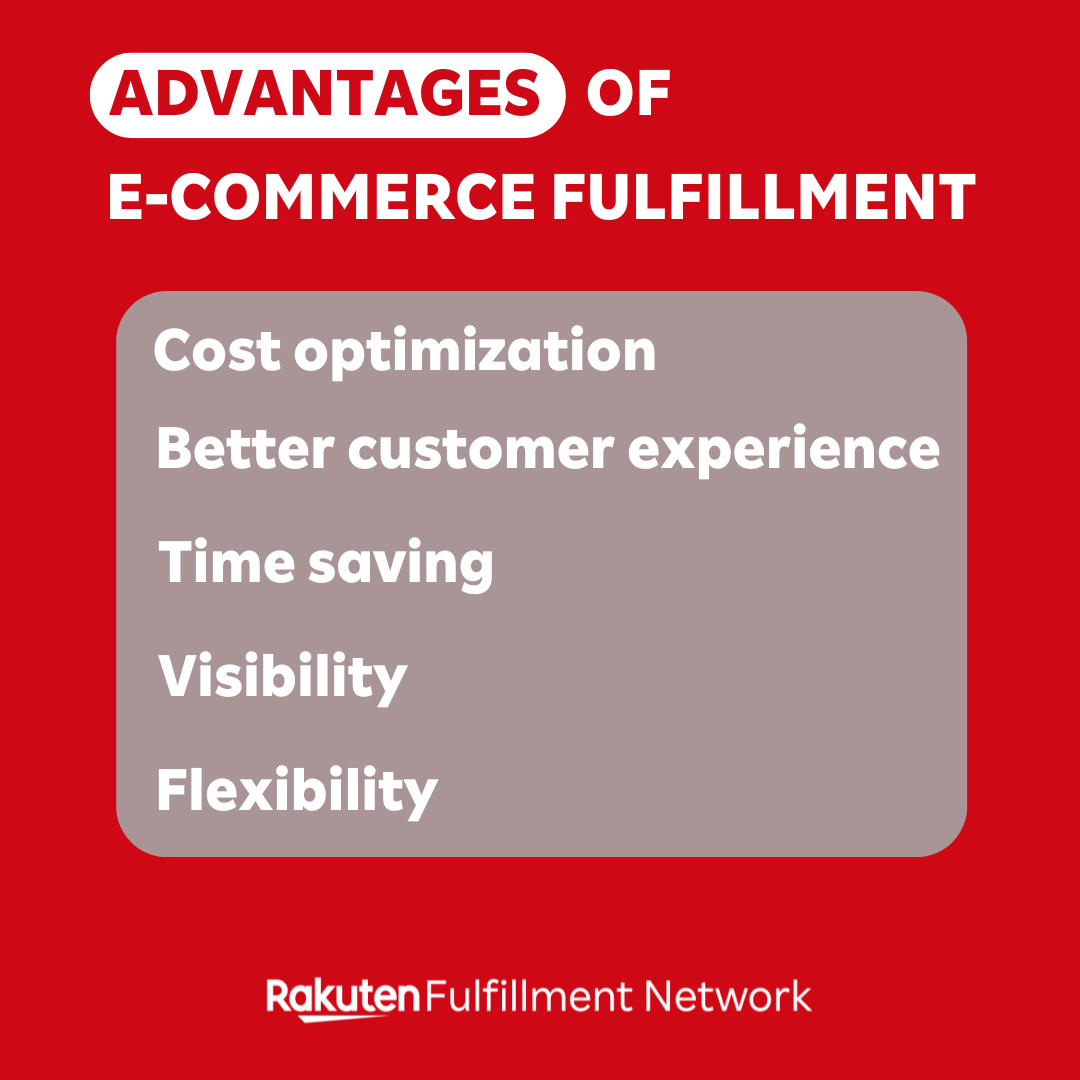
[/vc_column_text]
What is the Rakuten Fulfillment Network?
As mentioned above, e-commerce fulfillment allows companies to devote more time to their core business, while offering consumers a fast, reliable delivery experience. As a direct consequence, this helps to strengthen customer loyalty and stimulate growth. Provided you find the external service provider that meets your needs in every respect..
With the Rakuten Fulfillment Network, you offer yourself a key solution to increase your company's reach .Here are our key benefits:
- Support for all your fulfillment needs from a dedicated account manager.
- Intuitive Rakuten Merchand Dashboard for simplified business management .
- Clear pricing with fixed prices and no hidden costs, based on your needs.
- Storage in one of our globally dispatched and connected warehouses.
- Real-time stock management and replenishment requests.
- Fast order preparation and dispatch.
- After-sales service and reverse logistics.
- Possibility of opening an e-commerce store on our Rakuten marketplace .
- Manage your business from any other e-commerce site, your own or that of one of our competitors.
Reverse Logistics: How to Manage Your Product Returns Efficiently?
An essential link in the supply chain, reverse logistics is now an essential and strategic element to increase the attractiveness of your business. Read our dedicated article and learn how to turn it into a real strength for your business
What is reverse logistics?
The management of “normal” logistics, in commerce as in e-commerce, consists in managing the flow of goods from storage to delivery to the consumer. As customer satisfaction has become a major stake in a company’s success, it is now imperative to carefully manage any customer returns that may arise. This is what we call reverse logistics: from the consumer to the distributor, with all the steps that follow to manage these returned products.
Thus, reverse logistics is generally made up of 5 factors that we call the 5Rs:
1/ Returns
Consumers no longer hesitate to return a product that doesn’t meet their expectations. To be competitive, a company needs to give them the choice of returning it with or, better still, at no extra cost.
2/ Recalls
If certain items or an entire batch turn out to be faulty, it’s up to you to manage the returns. You may be offered a new item or a refund.
3/ Repairs
Once returned, goods must be inspected and repaired if necessary, so that they can be put back on the market in the best possible condition.
4/ Reconditioning
Increasingly popular with consumers, reconditioning is the perfect middle ground between new and second-hand. It is particularly popular in the high-tech sector – with smartphones and laptops at the top of the list – and in household appliances.
5/ Recycling
E-commerce logistics have a cost. A good way to reduce it is to opt for recycling returned products that cannot be put back on sale. It’s a simple and effective way to manage your overstock and help preserve our planet.

Reverse logistics in figures
If delivery times are carefully inspected by consumers before validating their shopping baskets, so is the management of returns. Here are two figures that will make you realize the importance of good reverse logistics management:
- 30% of products ordered online are returned to sender. This figure is 8.89% for purchases made in a physical store (Source: Invespcro)
- 41% of consumers say they have bought several items with the intention of returning some of them. This is mainly the case for ready-to-wear purchases. (Source: Narvar).
Other reasons why consumers return their orders include:
- In 23% of cases, the reason is the receipt of a different item from the one purchased online. This may be due to an error at the time of purchase or poor product presentation on the merchant’s website.
- You should also be aware that 20% of returns concern products damaged in transit to the buyer. Hence the importance of choosing the right logistics provider to reduce the risk of damage.
Are customer returns really important to consumers? According to a WalkerSands study, 54% of buyers say that free returns and exchanges are the second most important influence in their decision to buy. It’s also worth noting that 67% of consumers find out about a company’s returns policy before making a purchase.
What’s more, 58% of potential buyers express the wish to be able to make a return easily, with clear and precise instructions on the site and/or inside their parcel. Having to send an e-mail or contact customer service to find out how to return a product is now unthinkable. In the same vein, 47% of consumers appreciate that the return label is easy to print, or even already present in their parcel.
Finally, if reverse logistics are poorly managed, 30% of consumers would no longer buyfrom the same site. This rate rises to 60% in the 18-25 age bracket
How does reverse logistics work?
For a better understanding, reverse logistics can be broken down into 3 stages:
1/ Return processing
The consumer signals that he or she wishes to return a product, the company accepts the return and schedules shipment. Some sites also provide returns already printed within the parcel. They are informed of the return when it is processed by an external service provider.
2/ Sorting returned products
Here you need to inspect the products and determine their return category. To improve the efficiency of your reverse logistics, don't hesitate to categorize products according to different options: to be repaired, resold as new, resold as a return, recycled, scrapped or refurbished.
3/ Restock
Put products ready for resale back on sale, and integrate them back into your existing stock
[/vc_column_text]
How to optimize your reverse logistics?
Once you’ve realized its importance, you need to optimize your reverse logistics to attract more consumers. This attractiveness essentially involves :
- A clear returns policy. Your returns policy must be easily accessible on your website, on the marketplaces where your products are sold, or in the packages sent out.
- Meticulous analysis of the causes of returns. By asking your customers why they have returned a product, you can identify recurring causes and improve your offer accordingly.
- Increased return times. In Europe, the minimum return period is 14 days. But a longer return opportunity gives your customer sufficient time to try out the product. This may enable them to reconsider their decision to return it, sometimes in a hurry.
- Returned products can be put back on sale quickly. For optimum management of e-commerce logistics, it’s important to process parcels as soon as they are received. This means knowing whether the returned goods can be put back on sale straight away or whether they need to be repackaged beforehand. This will speed up remarketing and reduce your reverse logistics costs.
Finally,outsourcing your e-commerce logistics is an excellent strategy for boosting your business and enhancing its value in the eyes of consumers. It will enable you to simplify your reverse logistics as much as possible. You can then free up your time to exploit other acquisition levers to the full. A logistics service like Rakuten Fulfillment Network will take care of your customer returns, handling transport costs, quality control and restocking.
Marketplace: Essential Guide to Boosting Your E-Commerce
8.8 billion dollars: yes, that's quite a sum. And, above all, it's the estimated share of sales on marketplaces between now and 2025. This would represent 70% of e-commerce, according to McKinsey (2022) and Be STF research & analysis.
Digital marketplaces continue to grow and seduce buyers and sellers alike. Good news for your company: it's not too late to learn how to ride the wave.
If you're interested in the world of marketplaces, you've come to the right place: so, what is a marketplace? How does it work? What are the best practices for selling effectively on them?
Follow the guide!
Definition: What is a Marketplace?
A marketplace is an online platform that facilitates contact between buyers and sellers. It's also known as a marketplace, shopping platform, multi-vendor e-commerce site..
On this type of website, sellers (independent, professional or private) can sell their products, solutions or services. In most cases, a commission is charged by the marketplace for each sale made. Other remuneration models exist (and we'll tell you about them shortly).
To best visualize this definition, imagine a large digital shopping mall. The marketplace is the mall. Each store inside represents a partner vendor. Visitors, meanwhile, can stroll from store to store... without leaving the mall, without disconnecting from the marketplace.
Does this business model appeal to you? You're not alone. For several years now, the marketplace world has been booming. Consumers are seduced by it, with 92% of shoppers planning to use marketplaces more and more (Mirakl 2022). 52% of French people even say they prefer to do all their shopping on a single site (Yougov 2021).
For sellers, a presence on a marketplace offers increased visibility, web traffic and sales. For example, in 2020, despite the Covid-19 crisis, partner sellers increased their sales by an average of 24% on marketplaces. Marketplaces grew at twice the rate of e-commerce. And this is just the beginning! (Mirakl study, 2021).
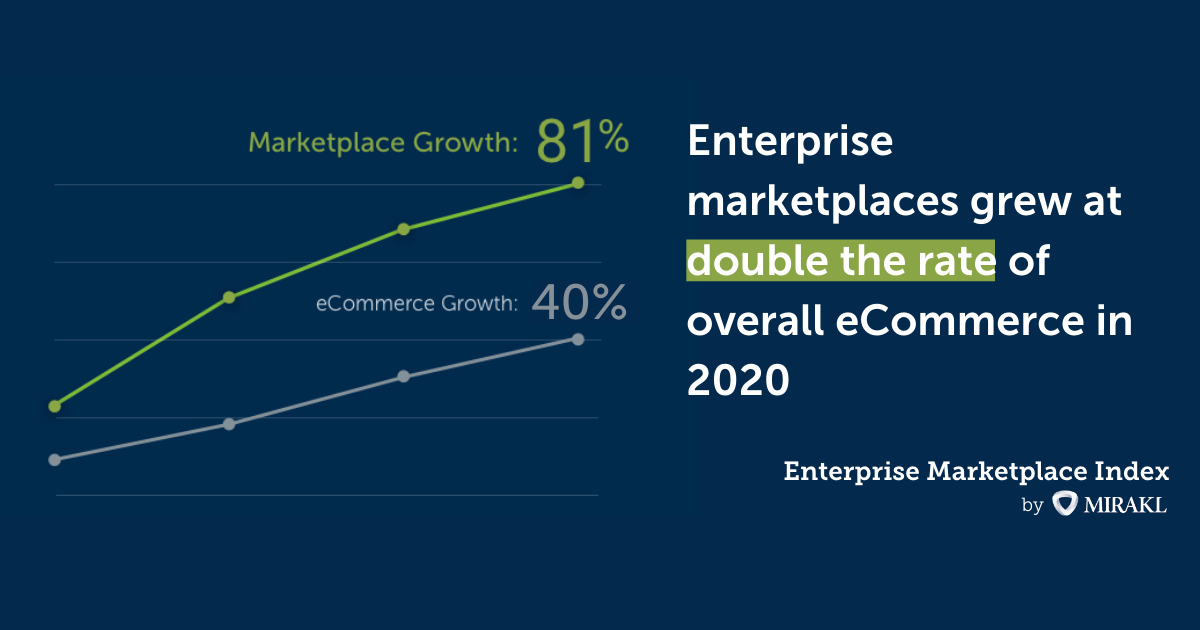
How do Marketplaces work?
Do you sell products or services? BtoC or BtoB? There's bound to be a marketplace platform that's right for you. But before choosing one, it's important to understand the different models that exist.
Not all marketplaces are remunerated in the same way. For example, some marketplaces offer their vendor partners :
- A commission on sales: the marketplace takes a percentage of each sale. These commissions may be fixed or proportional to the amount of the transaction.
- Registration or listing fees: sellers must pay a one-off or recurring fee to publish their products, services or solutions on the platform.
- Additional fees: for example, some platforms like Rakuten offer services to outsource inventory management, storage or shipping of your products.
- Monthly subscriptions : the price of these subscriptions generally covers features and benefits for partner sellers (such as greater visibility for their offers, lower commissions, etc.).
- Paid advertising: to highlight certain products or services, platforms may offer paid promotion options on ads.
Some marketplaces may also combine different remuneration models, to diversify their revenue streams. What's more, some platforms also offer direct sales. This is not the case with Rakuten, which focuses 100% of its efforts on sellers.
At Rakuten, our compensation model is based on two offers, tailored to your business:
- A free starter package, with a higher variable commission and management fees.
- A paid expert subscription, with a lower variable commission and management fees.
Why sell on a Marketplace?
Now you know what a marketplace is, and how this type of platform pays for itself. But as a professional seller, do you know why you should choose this simplified form of e-commerce?
If you're still hesitating to take the plunge, here are 7 advantages of selling on Marketplace 2.0:
- Improve your company's visibility: each marketplace benefits from an established user base and traffic. Sellers can thus increase their visibility.
- Multiply sales opportunities: with its large, ready-to-buy customer base, a marketplace facilitates the generation of new opportunities. Sellers benefit from a continuous flow of potential customers to their listings.
- Reduce marketing costs: by joining a marketplace, sellers don't have to start from scratch. They can take advantage of integrated marketing tools (product promotion, targeted advertising, recommendation of similar products) and an existing website (without having to develop their own technological infrastructure and communicate on it). The marketplace's loyal visitor base also limits acquisition costs. The result? Big savings!
- Simplify sales and logistics processes: many marketplaces, such as Rakuten, offer order management, storage, packaging and shipping services. With such simplified processes, sellers can concentrate on producing quality products.
- Secure transactions: selling on a marketplace means taking no risks when it comes to secure payment. This ecosystem is highly regulated. As an intermediary, the platform guarantees the smooth running of your sales transactions and data management.
- Create a complementary sales channel: joining a marketplace doesn't mean giving up your traditional sales channel (physical store, e-commerce site, social shopping, etc.). It simply means multiplying additional sales opportunities! The marketplace is a choice compatible with your other channels, to amplify your reach on the Internet.
- Boosting trust and credibility : a reputable marketplace offers a high level of credibility to sellers. And the good news is that buyers prefer to shop on a platform they can trust. This is your chance to earn their trust too!
What are the different types of Marketplace?
There's a marketplace for every business. Whatever your sector, you can invest..
1. A B2C marketplace
A case in point? Rakuten.
At Rakuten, we've been supporting the digitalization of 8,500 B2C businesses since 2002. Sellers of products or services for private individuals can create their online store on our marketplace, in a digital shopping mall visited by 15 million people.
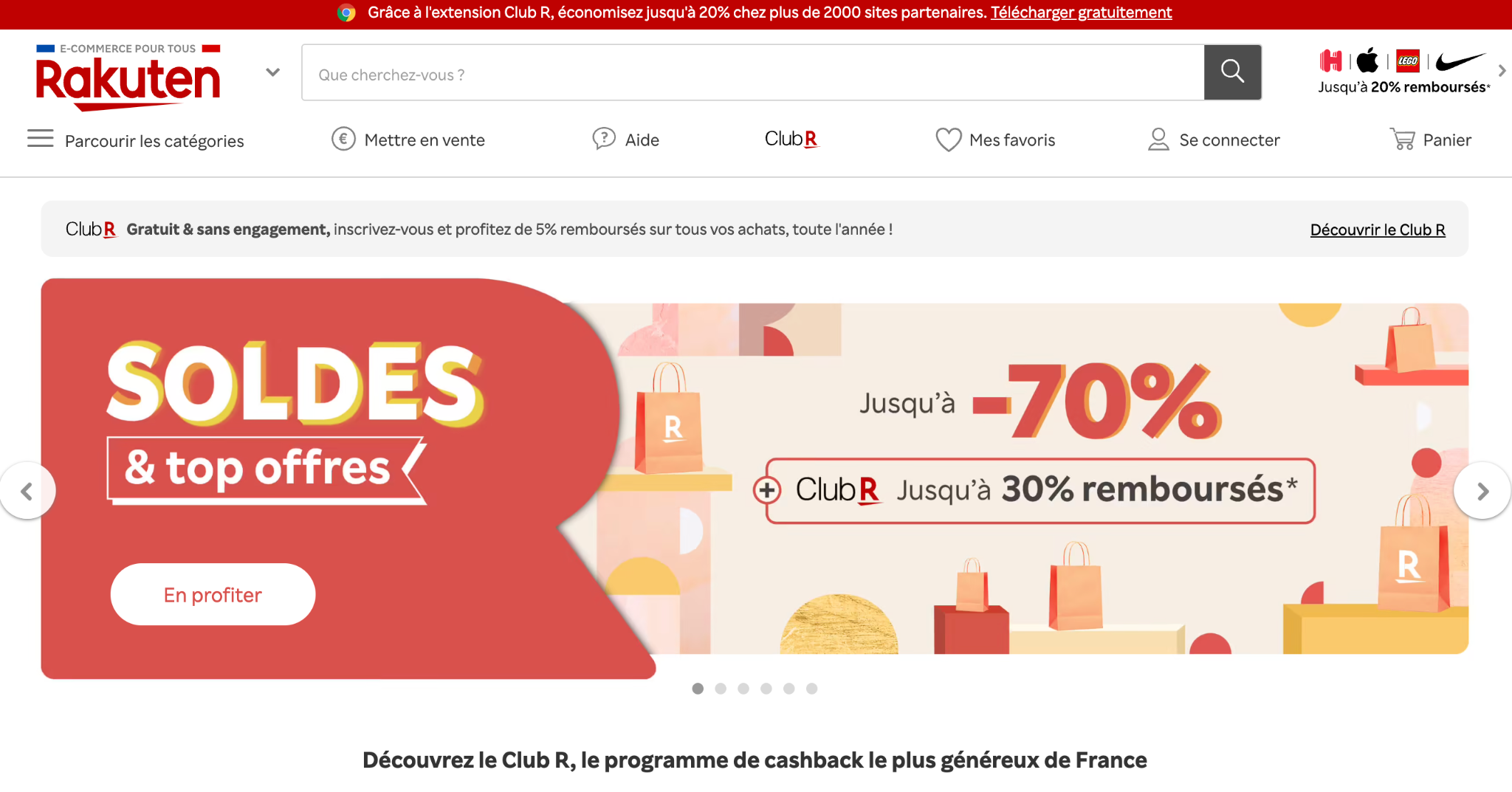
2. C2C Marketplace
A case in point? Rakuten too!
In our 2.0 shopping mall, 50% of products sold are second-hand. Consumers can sell their products, thanks to the "consumer to consumer" model. They benefit from numerous advantages (€5 free on the first sale, immediate redemption, Club R loyalty points, etc.)
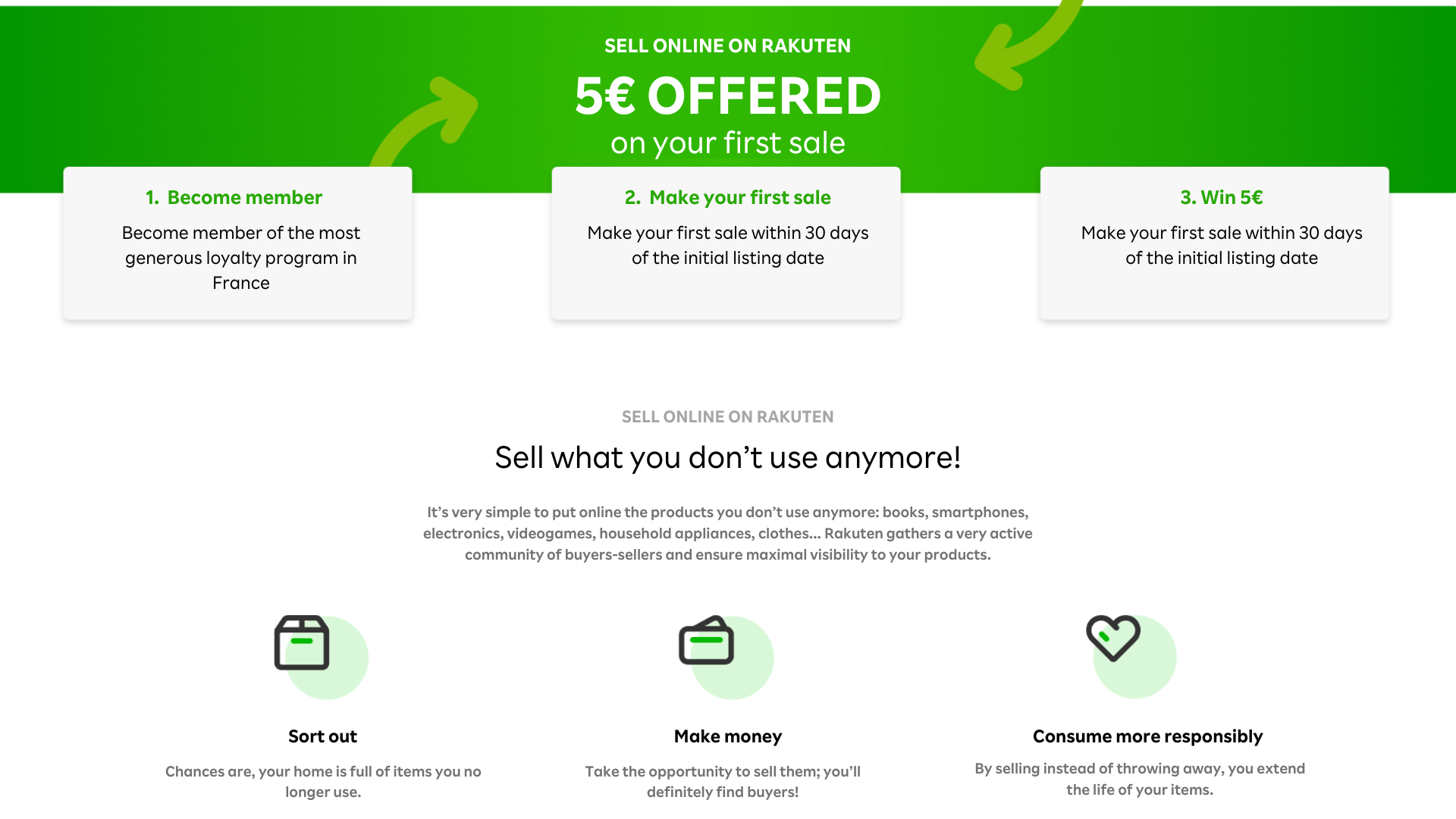
3. B2B Marketplace
A case in point? Unite (formerly Mercateo).
Unite (formerly Mercateo) has been revolutionizing the B2B market for 20 years. On this business-to-business marketplace, companies can buy office supplies and furniture, industrial equipment, catering equipment... A total of over 3.5 million products, in 13 countries!
In B2B, there are also numerous "cloud marketplaces". These online platforms offer cloud services and solutions from different suppliers, accessible from a single location.
4. Services marketplace
A case in point? Rover.
Rover is a specialized marketplace enabling pet owners to find pet sitters and walkers, worldwide. Over 2 million pet owners in 10 countries have booked services through the marketplace!
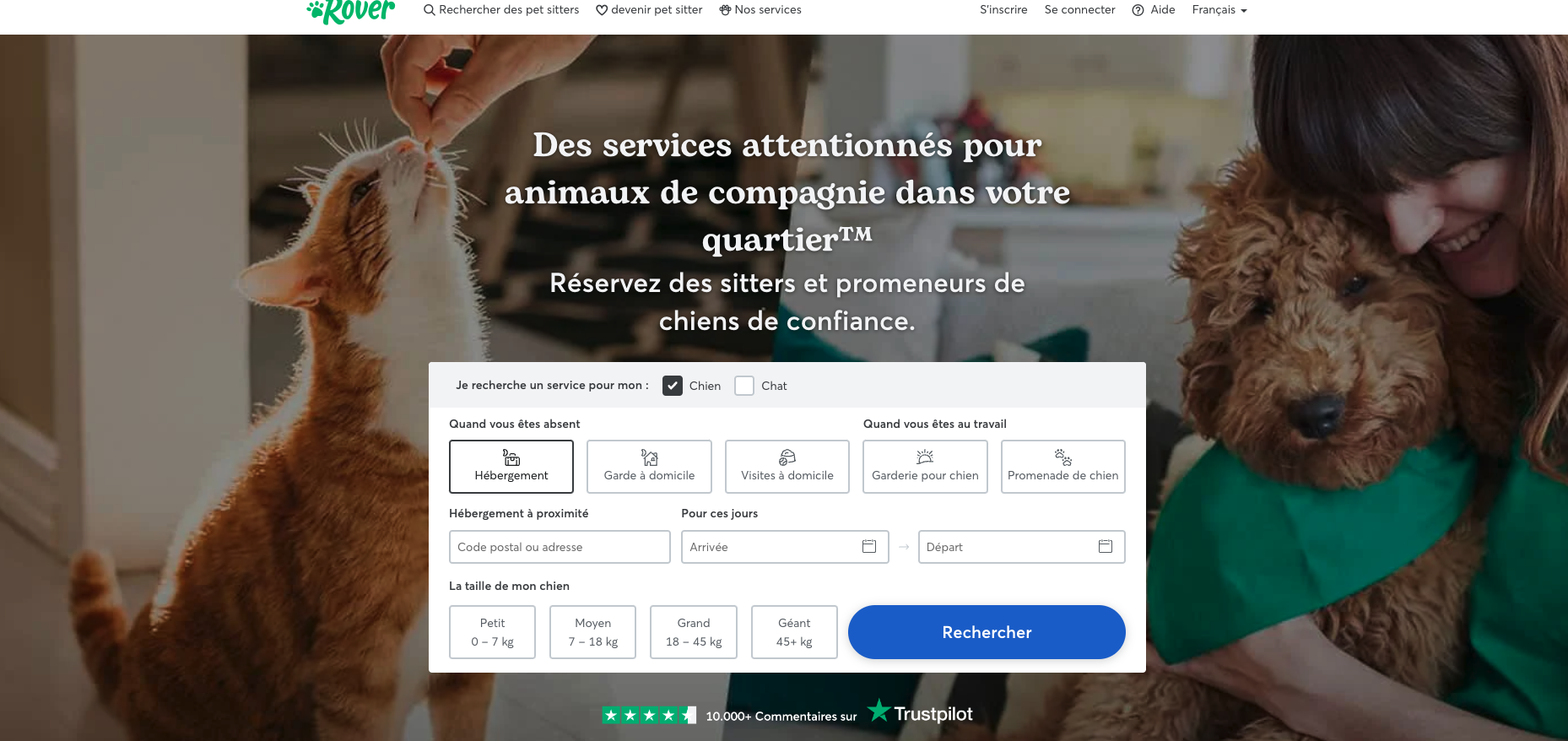
5. Vertical Marketplace
A case in point? Doctolib.
Doctolib is the leading vertical marketplace for e-health. The site enables over 340,000 healthcare establishments in Europe to book appointments online for patients. today, 80 million patients use the platform!
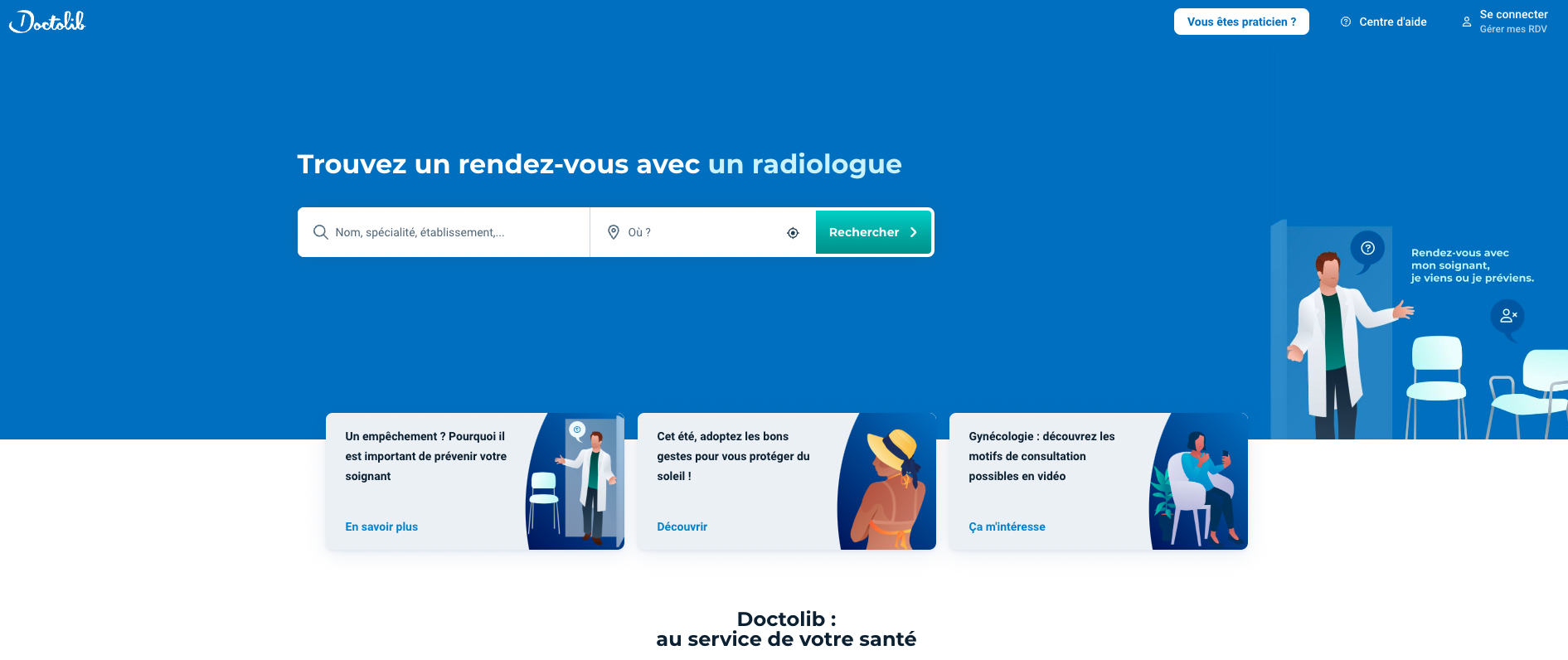
6. Joining and selling on a Marketplace: best practices
Tempted by the marketplace adventure? Here are the steps and best practices to help you get started:
- Find the right platform: find out how to choose a marketplace for your e-commerce business. But beyond the platform itself, there's a crucial question: should you opt for a marketplace or create your own independent online business?
- Setting up an account: each digital marketplace has its own procedures. With our solution, for example, registration takes just a few clicks. All you have to do is create a professional seller account and follow the steps indicated. Once your details have been validated, you can start selling your products straight away. Simple, fast and effective.
- Define the right pricing strategy : on a marketplace, the prices of your products can be compared. Remember to set competitive prices to attract buyers.
- Optimize your product descriptions: quality descriptions and photos are essential for selling your products. Without them, it's hard to establish your credibility and win the trust of buyers.
- Ensure good stock management : if you choose a platform that doesn't manage your stocks, it's your responsibility to ensure that your products are always available, to avoid any problems when orders are placed. Check your stocks regularly, set a critical threshold for restocking, and work (if necessary) with several suppliers to keep up to date.
- Deliver quality customer service : customer satisfaction is a priority. It is then analyzed by the marketplaces. At Rakuten, we use the Merchant Quality Score. It's based on ratings and opinions given by buyers, delivery experience and catalog quality. The higher the score, the greater the visibility of the partner seller's ads in strategic locations (Google Shopping pages, price comparison sites, product category home page, etc.)
- Benefit from ongoing support: at Rakuten, all our sellers have access to an E-Commerce Consultant. These dedicated E-Commerce Consultants support the platform's 8,500 professional sellers on a daily basis. Got a question? A need? We've got you covered!
Ready to develop your B2C sales outlet on a marketplace? To help your growth take off, join Rakuten France.
How to Improve Inventory Management?
Having given you a few tips on how to reduce delivery times and put the spotlight on 4PL logistics, let’s now turn our attention to inventory management. How can we improve it on a daily basis? How can it be optimized without costing too much time and money? Here are our tips and tricks to help you do just that
Why is it important to optimize inventory management?
Just as a good reverse logistics strategy is crucial to improving a company’s attractiveness, inventory management is an important factor in raising the profile of your business, building loyalty and attracting more customers. And there are many reasons for this. Good inventory management makes it possible to :
- Better visibility of the supply chain;
- Avoid under-stocking to avoid lost sales;
- Minimize overstocking to save money spent unnecessarily;
- Minimize losses due to inventory errors;
- Improve servicequality and, by extension, customer satisfaction through compliant products and faster delivery.
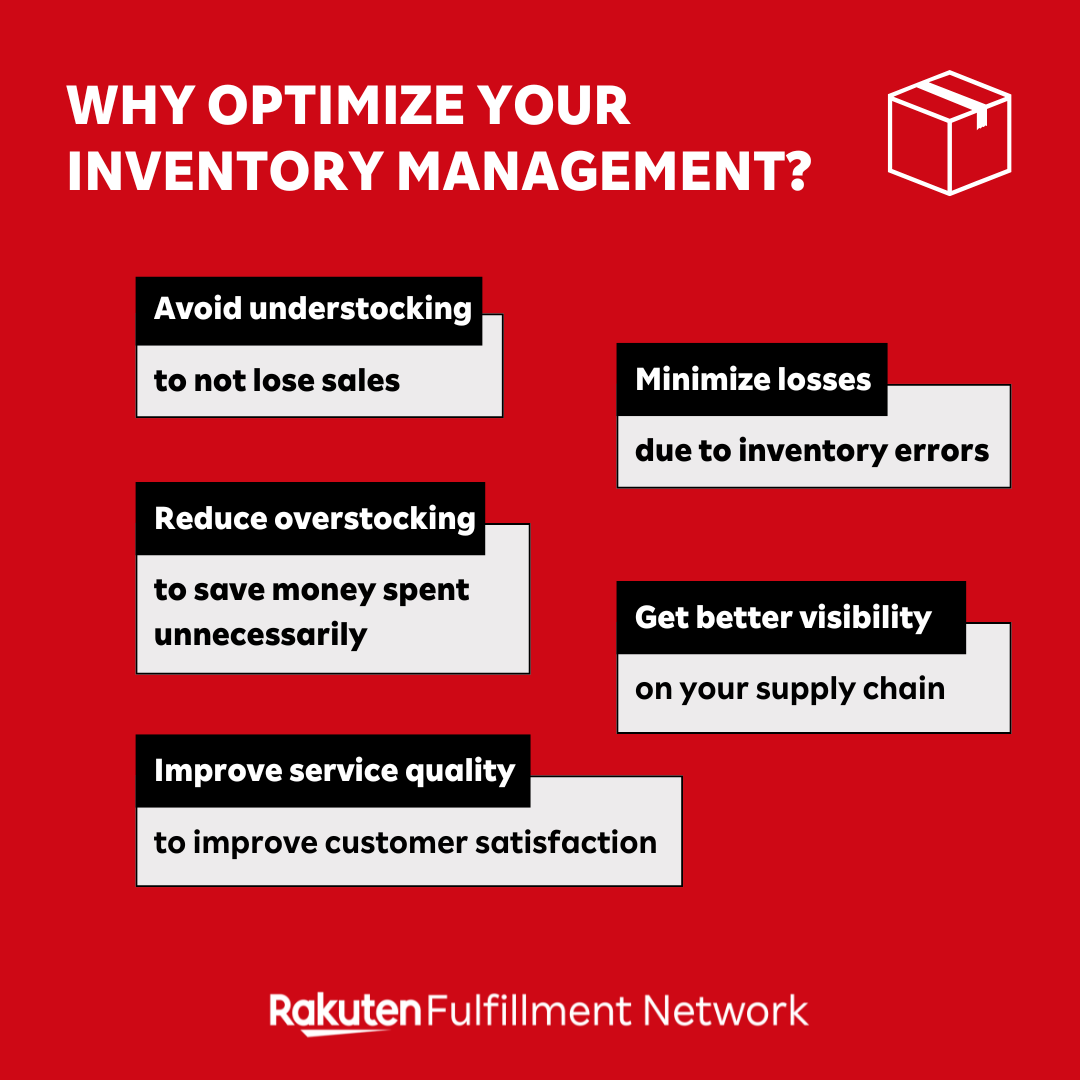
All these concepts, which are an integral part of fulfillment, are bound to have been on your mind at one time or another. All you needed to do was find the right inventory management method for your business
Improving inventory management: the available methods
Whatever your business, there’s bound to be a solution adapted to your inventory management among the following 8 methods:
1/ FIFO (First In First Out) method:
Items are sold in the order of arrival, i.e. the first items in stock are the first to be dispatched. This inventory management method is mainly used for perishable products or products with an expiration date.
2/ LIFO (Last In First Out) method:
Last in, first out. Products sold are the last to be put into stock. This method is often used for non-perishable products.
3/ Continuous replenishment method:
This involves replenishing stock as soon as it reaches a predetermined minimum level. This technique is frequently used for fast-moving products.
4/ Just-in-time method:
Order and produce only what you need for each stage of production or distribution. Your stock will be limited, and you’ll only buy the products your customers want. However, you need to be careful with this type of inventory management: your supplier needs to be reactive in order to respond as quickly as possible to consumer expectations.
5/ Demand forecasting method:
Manage inventory according to upcoming trends and the shopping season – Sales, Black Friday, Christmas, etc. – to anticipate higher or lower sales volumes. It’s important to understand your sales seasonality.
6/ MRP (Material Requirements Planning) method:
Inventory planning based on the need for raw materials, components and finished products to meet customer demand. This method uses sales forecasts and production lead times to calculate the supply requirements needed to produce finished products.
7/ ABC method (Activity Based Costing) :
Allows products to be classified according to their value to the company, and management efforts to be concentrated on the most important, most in-demand and most profitable references.
8/ Outsourcing logistics :
What if the key to good inventory management lay in outsourcing your logistics? Storage and management of orders, packaging and delivery of parcels, after-sales service… The benefits of outsourcing are numerous, provided you choose the right logistics provider.
E-commerce Customer Service: How to Satisfy and Retain Your Customers
In e-commerce, the relationship between customer and brand is unique in that it is dematerialized. Brands rarely meet their buyers face-to-face, unlike in traditional retail. Yet e-buyers need attention, assistance and support just as much: that's what customer service is all about .
The aim of e-commerce customer service is to deliver impeccable customer service to consumers who buy online. The aim is to help customers before, during and after their purchasing journey. Typically, all these interactions are handled by a dedicated department within the company. But delivering memorable customer service and experience must be everyone's priority, in-house!
In this guide, find out how to optimize your online customer service. Benefits, differences with in-store customer service, best practices... Let's get started.
1/ The benefits of e-commerce customer service
5 out of 10 French customers contact customer service with a question or an update on their order or delivery (source: Essendex survey, 2023). More often than not, these requests concern the resolution of a problem... But that's not the only role of customer service!
 Graph Source : Essendex survey 2023
Graph Source : Essendex survey 2023
A (good) e-commerce customer service department takes care of rapid assistance, managing returns and refunds, collecting customer reviews... But also of personalizing the shopping experience, by proposing exclusive offers and promotions. The aim? Take care of customer relations on digital channels, and offer a memorable consumer experience.
Deploying such an e-retail customer service strategy offers numerous advantages:
- Improved customer knowledge : at the heart of a customer service approach is listening. By listening to customers' needs, expectations and problems, you can improve your knowledge of them. And thanks to this customer knowledge, you'll be able toanticipate the best actions to satisfy each customer. Perfect for boosting conversion rates over the long term!
- Lower customer acquisition costs: thanks to exceptional customer service, companies can increase re-purchase and loyalty. And thus reduce their prospecting and acquisition efforts (and, above all, costs!). A new customer costs on average 5 times more to acquire than one to retain... Hence the importance of delivering perfect assistance, at every stage of the purchasing process.
- Increased customer loyalty : according to Microsoft, 95% of customers consider support to be an important criterion when choosing and deciding to stay with a brand. For an online store, customer service is the cornerstone of retention and loyalty. This is one of the main benefits: thanks to the efforts made by customer support, loyalty increases!
- Increased growth: the impact of good customer service on ROI and sales is considerable. First of all, if customer service helps build loyalty, this loyalty rate is reflected in profits. According to a study by Bain & Company, increasing customer retention rates by just 5% can boost profits by 25% to 95%. Today, 64% of business leaders say that customer service has a virtuous impact on their brand's growth (source: Zendesk, 2023). Food for thought!
- Improving the customer experience: in e-commerce, the experience is not just transactional. It's also relational! When a customer service department responds responsively to customer expectations, customers are all the more satisfied. This increase in customer satisfaction impacts loyalty, and all the other benefits described above. Remember: the customer experience (both in-store and online) remains the most important preference criterion for consumers... And customer service is part of the reason why! (Source: Dunnhumby Barometer, 2023)
- Improved team productivity: in e-commerce, having a dedicated customer service department is a guarantee of productivity. But it also enhances the quality of exchanges, thanks to a team trained in customer support and relationship management. Deploying a customer service department and a dedicated team increases the productivity of all other teams... Where everyone can concentrate on their missions, as efficiently as possible.
Now you know why you should set up a customer service department for your online store, DNVB or ONVB. But do you know how to differentiate it from in-store customer service? And which features to deploy, to deliver the right 2.0 support?
2/ In-store customer service vs. e-commerce
No, in-store customer service is not the same as e-commerce customer service. There are many differences. And online site owners must learn to adapt, to satisfy consumers.
Between the physical store and the e-commerce site, each channel has its own strengths and constraints, influenced by buyers and the specificity of the product or service on offer. And if you're an e-commerce player... Here's how to take advantage of customer service 2.0, which modernizes and improves the customer experience:
| Criteria | Physical store | E-commerce |
| Availability | Limited to store opening hours. | 24/7, accessible at all times. |
| Interaction | Direct and personal. | Mainly digital (e-mail, chat, social networks). |
| Problem resolution | Often immediate for returns and exchanges. | Can be delayed by delivery and processing times. |
| Personalization | Based on human interaction. | Use of data to offer personalized solutions. |
| Advice | Personalized advice and product demonstrations. | Advice via FAQ, forums or chatbots; less personalized. |
| Returns and exchanges | Immediate processing possible. | Requires shipping, with variable lead times. |
| Associated costs | Depends on store policy. | Return or shipping fees may apply. |
| Accessibility | Requires physical presence of customer. | Accessible from any location with internet. |
| Request tracking | Managed in-store without systematic digital tracking. | Detailed, automated online tracking of requests. |
| Technology | Limited to in-store equipment. | Technological advances such as AI to improve after-sales service. |
Thanks to electronic channels or tools, connected customers want to benefit from unified assistance. The challenge for e-commerce customer service? To offer reactive, personalized assistance, accessible from any support and seamless. Indeed, customers hate having to repeat themselves, between different channels of exchange with the company. 93% of them are even prepared to spend more if the brand avoids repeating itself. And 73% of customers want to be able to start a discussion on one channel, then continue on another... And face an interlocutor who understands them, who knows them.
But how do you create this seamless, unified customer service experience? How do you deliver the best online support? Follow the guide!
3/ E-commerce: 6 best practices for outstanding customer service
1. Focus on omnichannel customer service
Today, 57% of customers prefer to interact with a company via digital channels. Even if, in the event of a major problem, the most suitable channel remains the telephone for 81% of professionals (source: Salesforce Report, 2023). So, e-mail, telephone, social networks... which channel should you choose?
Rather than asking the question of "which channel to choose", ask yourself: what are the complementary channels for my target e-commerce customers? To meet the needs of all your customers, you need to be omnichannel. The aim is to offer consistent points of contact to meet consumer expectations. But be careful! Each channel requires resources (human, technological or financial). The multiplication of channels must not impact your responsiveness!
2. Respond quickly to customer requests
Responsiveness is one of buyers' top expectations when it comes to e-commerce customer service. in fact, 39% of customers consider it a priority to receive a response or solution as soon as they make their first request (source: Qualimétrie, 2022). On the other hand, waiting hours on the phone, or e-mailing support several times... that's the best way to drive customers away!
To deliver quality customer service, you now know what to focus on: responsiveness! Digital channels such as chatbots and instant messaging are particularly interesting for responding to customers in real time.
3. Offer customer autonomy tools, such as an FAQ page
94% of French people want to solve their own problems (source: Yext study, 2023). Today, autonomy is paramount. With just a few clicks, consumers want to find accessible answers, at any time of the day or night. To guarantee such access to information and answers to the most frequently asked questions, here's a golden tool: the FAQ.
On an e-commerce site, FAQs can be used to group together the most frequently asked questions, such as :
- What delivery methods are available ?
- What are the conditions for returning a product?
- What should I do if an item is defective?
The ideal solution? Create a dynamic FAQ. This tool integrates a search bar on the FAQ page, enabling the customer to type in specific keywords... to bring up the right question, providing the right answer. Rather than scrolling endlessly through a web page.
4. Personalize assistance, for maximum satisfaction
Being treated like a number: that's what customers hate, in e-commerce as in retail. Especially when it comes to asking for help! As soon as a customer contacts your customer service department, make sure you personalize your exchanges. Customers need to feel unique, listened to and recognized.
Here are a few best practices to demonstrate this personalization:
- Collect, analyze and centralize customer data. When you contact them, your support team will know their purchasing history, preferences, key information, etc
- Address customers by name. Whether you're communicating with them in writing (by e-mail, on social networks, by chatbot, etc.) or over the phone, always make sure you name them, to create a sense of proximity.
- If there's a quid pro quo to offer (such as a gift, as compensation), be sure to offer a personalized product or service recommendation. Rely on previous purchases to offer the most appropriate attention.
5. Train the team for maximum efficiency
You can't become a customer support expert by snapping your fingers. To take care of customer relations, offer effective assistance, respond to customer problems in a responsive and appropriate way... Training and a qualified team are necessary! Human and interpersonal skills are required, as well as technical skills.
Indeed, to respond to the concerns of online buyers, it's important to be trained in the products, services and tools used in-house. Knowledge base, customer support channels, self-care tools such as chatbots... A properly trained customer service team means optimized customer satisfaction!
6. Collect, manage and respond to customer feedback
Online reviews are an integral part of customer service. What do customers have to say about your company after they've purchased your products or services? And what do you do with these reviews once they've been collected? And who is responsible for responding to each customer?
Defining a customer feedback strategy is essential to delivering a quality experience. In e-commerce, your three priorities are to :
- Collect post-purchase reviews : via a satisfaction questionnaire, or through spontaneous review platforms.
- Manage the opinions collected : share them with all internal teams, and use these opinions to demonstrate continuous improvement (on the product, marketing, the online purchasing process, etc.). Don't forget to publish each product review on its own product page.
- Respond to all feedback: whether it's positive or negative, show customers that every piece of feedback counts.
By doing so, you take care of existing customers, while attracting new buyers! To find out more about customer feedback strategy and measuring customer service success... Be patient. We'll explain it all right after.
4/ Should you automate your e-commerce customer service?
This is THE big debate. Should you automate all or part of your customer service for your e-commerce site? At Rakuten, here's our opinion: automation tools are golden levers for relieving the burden on support teams... without replacing them! Indeed, technology is not intended to replace an entire team of online customer advisors. On the contrary, it can speed up the processing of the most common customer requests.
Thanks to these automated tools and processes, customer service teams can concentrate on less time-consuming or repetitive tasks. Like responding to the most important customer issues. It's a real time and efficiency saver.
Among the automation tools most frequently used by e-commerce customer services are selfcare solutions. These chatbots or FAQ solutions enable customers to be more autonomous, and get instant feedback on their questions. Certain channels can also be automated, such as e-mail or telephone messaging. The latter is known as an IVR, or interactive voice response system.
Finally, knowledge-base or CRMtools are particularly important for automating part of the customer management process in-house.
If you'd like to start automating your e-commerce customer service, here are a few interesting tools, depending on your needs:
| E-mail automation | Salesforce Pardot, Mailchimp, Sendinblue , ActiveCampaign HubSpot Email Marketing Get Response , Constant, Contact ConvertKit, Drip, Autopilot |
| Live chat and chatbots | Dialogflow, ManyChat, Drift, Intercom, Chatfuel, Zendesk Chat, Tidio, Botsify, LivePerson, Watson Assistant |
| Customer relationship management (CRM) software | Salesforce, HubSpot CRM, Zoho CRM, Microsoft Dynamics 365, Freshsales, Pipedrive, Insightly, Oracle CRM, SAP CRM, Nimble |
| Interactive Voice Response (IVR) | Twilio, Genesys, Avaya, Cisco Unified Contact Center, NICE inContact, 8x8, Five9, Aspect, RingCentral, Interactive Intelligence |
| Skill-based routing | Avaya, Cisco, Genesys, NICE inContact, Five9, 8x8, RingCentral, Aspect Software, Mitel, Interactive Intelligence |
5/ Customer service and marketplaces: how to manage after-sales service?
Now you know how to manage customer service on an e-commerce site. Now imagine: you decide to join our 12,000 sellers on Rakuten, our marketplace. You create your e-shop, complementary to your e-commerce site, directly on our digital marketplace. Our 13 million loyal buyers are just a click away ... And you'll quickly make your first sales. But if you have any questions, how do you handle customer relations? How do you provide customer service on a marketplace?
At Rakuten, nothing could be simpler. Our marketplace offers complete, dedicated support for after-sales service. We provide you with specific tools for your online store. And as a Rakuten seller, you'll benefit from extensive support via internal messaging, to help you manage and optimize your after-sales service.
Delivering service excellence (omotenashi) is one of Rakuten's fundamental pillars. Our priority? To guarantee a caring approach and a committed presence with our sales staff... And to encourage them to adopt a similar attitude towards their customers!
To find out more, find out how to communicate with a Rakuten buyer and answer their questions.
6 / Measuring the success of your customer service: the last essential step
E-commerce customer service now holds no secrets for you. Ready to launch your own digital customer support strategy? Once you've deployed your support and initiated the first interactions, think about this indispensable step: measuring the strategy's performance. Gathering KPIs is essentialto improving customer experience and operational efficiency .
Here are the main KPIs to collect and track:
- First Contact Resolution Rate (FCR): Indicates the percentage of problems resolved on first contact.
- Average Response Time (ART): Calculates the average time taken to respond to customer queries.
- Average Resolution Time (ART ): Measures the average time required to completely resolve customer queries.
- Call Abandonment Rate: Percentage of calls abandoned by customers before speaking to an agent.
- Contact Volume: Tracks the total number of requests received by all service channels.
- Agent Satisfaction Rate: Assesses the level of satisfaction and well-being of customer service agents.
- Sentiment Analysis: Uses AI to analyze the emotions expressed in customer communications.
- Cost per Contact: Calculates the average cost of handling a customer service request.
- Customer Satisfaction (CSAT): Measures immediate customer satisfaction after an interaction or purchase.
- Net Promoter Score (NPS): Evaluates the likelihood of customers recommending your company to others.
These last two indicators are particularly important. As we mentioned earlier in this article, collecting customer reviews is essential for gaining insight into customer satisfaction and recommendation.
At Rakuten, this monitoring is a priority. We offer you the opportunity to evaluate your quality as an e-retailer through several criteria linked to customer satisfaction, your delivery strategy and your catalog. So you can improve the quality of your customer service... and much more besides!
Influencer marketing and e-commerce : complete guide
92% of consumers trust influencers' recommendations more than the brands themselves (source: Nielsen). To gain the trust of their target audience (as well as credibility and authenticity), e-commerce sites have every interest in relying on this lever. This is known as word-of-mouth 2.0 or influencer marketing.
The aim for e-tailers is to forge partnerships with influencers, who can then promote their products online, particularly on their social networks. Interested in influencer marketing? Follow the guide and find out everything you need to know about influencer marketing in e-commerce.
What is influencer marketing in e-commerce?
Influence and influencer marketing: definitions
At the heart of the concept of influencer marketing lies that of the influencer. An influencer is a person who, through his or her notoriety and media exposure, has great power to influence public opinion and consumers. Now recognized as a profession, influencers create content for their audience. This content is often created in partnership with e-retail brands, to promote their products or services. When a brand chooses to work with an influencer, it implements an influencer marketing strategy.
Influencer marketing is a type of marketing based on a partnership between a company and an opinion leader (influencer). The aim is to promote a brand, product or service through content created on social networks.
Before choosing an influencer with whom to collaborate, the brand needs to decide :
-
- The type of influencer: some public figures have a small, engaged audience of less than 5,000 people. These are known as nano-influencers. In ascending order, we then classify micro-influencers (between 5,000 and 100,000 subscribers), macro-influencers (between 100,000 and 500,000 subscribers) and celebrities (1 million subscribers).
- The type of collaboration : among the various possibilities, we find the traditional product placement, through a post on social networks (this is a technique favored by 76% of influencers in 2023, according to Reech). Online stores can also be seduced by content sponsorship or the organization of a competition. In B2C, unboxing is also a popular format: the influencer unwraps a product received live, and expresses his or her emotions first-hand.
- Retribution: in exchange for such promotion, the influencer may receive financial remuneration, a commission on sales or material compensation, such as a free product.
- The type of influencer: some public figures have a small, engaged audience of less than 5,000 people. These are known as nano-influencers. In ascending order, we then classify micro-influencers (between 5,000 and 100,000 subscribers), macro-influencers (between 100,000 and 500,000 subscribers) and celebrities (1 million subscribers).
Influence marketing trends in e-commerce
Influencer marketing has been a preferred lever for e-tailers for several years now. Content created by influencers helps to increase visibility and boost sales. But every year, new trends emerge. Knowing about them and making them your own increases your chances of selling more... and better!
New trends in the e-commerce influencer market include, for example:
- The rise of long-term collaborations: Internet users are not fooled. To trust an influencer and a brand, they need to be sure that the collaboration is real, authentic and credible. Today, consumers prefer influencers who collaborate with fewer brands, but on a long-term basis. Your mission as an e-commerce site? To collaborate with an influencer ambassador, over a period ranging from 6 months to 1 year. The quality and durability of a partnership are real levers of trust.
- The rise of micro-influencers: campaigns run with micro-influencers generate an average engagement rate of 7%, 22 times higher than that of major celebrities (source: Influencer Marketing Hub study). This statistic confirms the impact of smaller influencers, capable of creating more personal and authentic relationships with their audience. E-tailers therefore have every interest in incorporating nano- and micro-influencers into their thinking in 2024. It's no longer the size of the community that counts... but the rate of engagement!
- An increasingly strict legal framework: the new Law of June 9, 2023 now provides a framework for commercial influence, in order to combat the excesses of influencers on social networks. This law now requires content creators to specify the words "advertising" or "commercial collaboration" when publishing a post paid for by a company. They are also obliged to declare for tax purposes the receipt of products or gifts sent by brands. To maintain their credibility, e-commerce sites therefore need to pay extra attention to the reliability of the influencers with whom they collaborate, as well as to compliance with the new legal rules
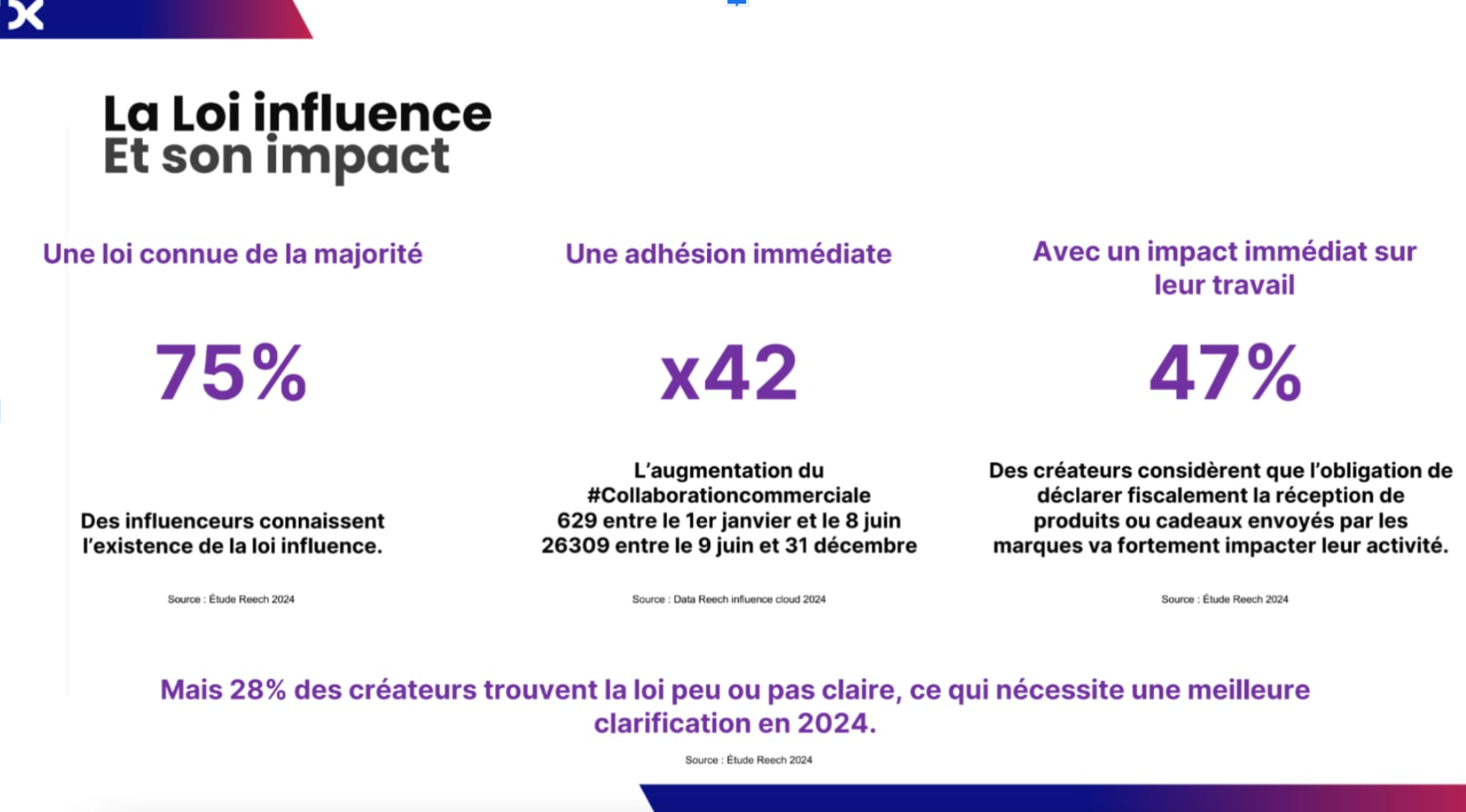 Source: Reech study, 2024
Source: Reech study, 2024
The benefits of Influencer Marketing in e-commerce
-
Increased brand awareness
An influencer marketing campaign enables you to promote your e-commerce site to a wider audience. When a content creator communicates about your products, thousands of people discover (or rediscover) your brand.
In this way, you benefit from the reputation of an opinion leader to increase your own brand awareness. This rise in brand awareness is also accompanied by increased visibility and traffic on your e-commerce site, as well as on your social networks.
-
Boosting sales and ROI
Influencer marketing is a genuine acquisition lever. It influences Internet users' thinking and buying behaviour, thanks to the recommendations of content creators.
71% of consumers are more likely to buy a product or service thanks to a publication on social networks (Source: Hubspot). As for influencers, the average conversion rate achieved thanks to their sponsored content is 2.55% (Source: Grapevine study).
So it's no surprise that many retailers are investing in this marketing strategy. Return on investment is a driving force: 89% of marketers claim that the ROI of influencer marketing is comparable or better than that of other marketing channels (source: Mediakix study).
Let's take an example of collaboration, between the Lancaster brand and influencer Juste Zoé. Together, they decided to go further than sponsoring a TikTok video or organizing an Instagram contest. The brand and the content creator co-created a unique handbag in 6 colors. In just one weekend, over 800 sales were made, with the bag selling out in 48 hours. This success story perfectly illustrates the power of influence on sales!
-
Increased credibility and confidence
When a popular content creator recommends one of your e-shop's products, you instantly increase your "trust capital". As we've seen, Internet users are more likely to trust recommendations from trusted third parties, such as friends or influencers.
This impact on trust goes hand in hand with an increase in credibility: if a subscriber trusts an influencer who recommends a brand, then he or she is more likely to find the brand credible... And to make a purchase.
So, to develop your credibility, brand awareness and customer acquisition, you know what you have to do: rely on influencer marketing.
How do I find influencers?
Now you know why you should implement an influencer marketing strategy. Ready to take action? The first step is to find the right influencers, to create the right partnerships. 34% of brands say they have difficulty finding influencers, not least because 67% are concerned about fraud or unreliable content creators (source: Shopify).
So, to find influencers, here's our advice for e-commerce sites: if your social network monitoring isn't working, get in touch with influencer agencies. These key partners offer complete support, to set up the whole campaign, in complete security. While the price may be higher, this solution offers a great deal of comfort.
Which communication channels should I choose for an e-commerce influencer campaign?
Territory Influence recently told BDM: "In 2024, as audiences diversify their online presence, brands need to adjust their strategies accordingly. This requires collaborating with influencers whose presence spans multiple channels".
Among the most effective communication channels for e-tailers' influencer marketing campaigns are :
1. Instagram
Instagram is the world's most powerful social network for influencer marketing. With overa billion monthly active users, brands can take advantage of a wide range of target demographics. What's more, the average engagement rate for an influencer on Instagram is 1.9%: a very good score!
On this social media, influencers can publish visual content, whether photos, videos, stories or real. The formats lend themselves perfectly to different types of collaboration: insights, sponsored ads, unboxing... Or even direct collaborations with influencers via Instagram Shopping.
On the other hand, influencer marketing is increasingly competitive and expensive on Instagram. With the rise of influencers on the network, some collaborations may seem less authentic. Finally, beware of frequent algorithm updates, which can affect the visibility of brand publications... And influencers!
2. TikTok
TikTok has only been around since 2016, but had accumulated over 1.5 billion active users on the app by January 2024. 45% of marketers use Tik Tok for their influencer marketing campaigns, mainly to target a young, dynamic audience that appreciates the short video format, a symbol of engagement and virality.
On this medium, the power of micro-influencers is no exception to the rule: they have an engagement rate of 17.96%, compared with 4.96% for better-known influencers (source: Affde). The algorithm is also favorable, as it values organic discovery and trending content.
However, e-commerce sites need to understand that a young audience dominates on TikTok, which may not be suitable for all products to be promoted. What's more, the lifespan of a video is only a few days. As trends evolve rapidly, long-term campaign planning can be difficult.
3. Facebook
Facebook is the most widely used social platform, with 2.8 billion monthly active users . Thanks to its highly precise advertising tools, influencer campaigns can be targeted effectively, and performance can be measured efficiently.
On Facebook, influencers can also leverage different formats: written posts, photos, videos, stories, groups and communities in which to interact... Community interaction is also at the heart of Facebook usage, particularly within groups.
However, organic engagement (or reach) is declining over the years, requiring brands to increase their advertising spend. The audience also tends to age, which can be a disadvantage for e-commerce sites targeting a younger audience. Finally, if you're new to marketing, the complexity of Facebook's advertising tools can be frightening.
4. Other promising channels
Other promising channels for influencer marketing (B2C or B2C) include :
- LinkedIn: ideal for reaching a professional and B2B audience, LinkedIn also helps reinforce a brand's credibility and authority. The audience and engagement rates are more limited, and influencer campaigns can be costly, but it's a platform of the future for B2B influence.
- Twitch: this live streaming platform broadcasts reliable, authentic content. Subscribers can respond live to content creators' product presentations, increasing engagement. To date, 6% of professionals say Twitch is their most influential channel.
- YouTube: vlogs, tutorials and reviews (of brands and products) are the most popular content on this platform. With its accessible, dynamic video format, it's a preferred lever for marketers. Today, 90% of Internet users discover new brands thanks to YouTube videos... A great opportunity to increase visibility and boost e-commerce sales!
5 tips for a successful influencer marketing campaign
Would you like to launch an influencer strategy to promote the products on your e-commerce site? Excellent decision. To help you implement this new marketing lever, here are our recommendations:
- Define objectives: clear, measurable objectives are the common thread running through your strategy. So, why do you want to use one or more influencers? On average, 50% of the campaigns launched are aimed at improving brand image, 42% at generating online sales and 39% at expanding the audience.
- Choose the right influencers: depending on their relevance, the size of their audience, their positioning on one or more themes, their rate of engagement... To help you choose and contact influencers, you can call on the services of a specialized agency.
- Draw up a precise brief: to ensure that the influencer's communication is as credible as possible, your mission is to brief them effectively. A brief document can include a presentation of your e-commerce site, your values, a detailed presentation of the products to be promoted, examples of arguments to be put forward... The brief is also accompanied by a contract, to secure the expectations and financial terms of the partnership.
- Discuss the content: before the influencer publishes a post or video, discuss and agree on the content to be created. The more personalized the campaign, the greater the impact of the content. For long-term collaborations, also discuss an editorial calendar, various commercial highlights and brand news. At the time of publication, also make sure that the content creator complies with the legal framework in full transparency, by mentioning the collaboration.
- Track and measure performance: this is the final step in any influencer strategy. Performance analysis is essential to calculate the campaign's ROI. To achieve this, monitor the following KPIs: engagement rate, number of subscribers on the brand's social networks, evolution of website traffic, conversion rate... Depending on the results, you can make continuous improvements to your future marketing campaigns!
E-commerce: 3 examples of successful influencer campaigns
-
Joone
This baby care brand has increased its popularity through influencer marketing, in particular through long-term campaigns with influencers. Macro and micro-influencers share Joone's values: transparency, authenticity and simplicity.
Thanks to publications on social networks, over 3 million targets have been reached. The EMV (earned media value), which corresponds to the means of measuring the return on investment of the content created, is around €96,000.
-
Hello Jack
Hello Jack is a D2C (Direct to Consumer) pet food company . To conquer the market, right from its launch, the brand relied on an influencer marketing strategy: for the first two months, the company sent products to over 500 KOLs (Key Opinion Leaders) on Instagram and Facebook.
The results? Nearly 3 million reaches of the publications, and the creation of an active community of 9,000 followers on the brand's Instagram, as well as numerous sales.
-
Daniel Wellington
The watch brand is a benchmark in influencer marketing. Daniel Wellington has collaborated with hundreds of micro-influencers and macro-influencers, to promote their products. Influencers share photos of themselves wearing the watches, on Instagram, with a dedicated hashtag and a promo code for their followers.
In one year, thanks to these advertising campaigns, over 1.2 million publications have been indexed thanks to the hashtag. The company's subscriber base grew by 1.1 million, and sales soared: 214%!

Conclusion
Have you just created your e-shop, from an e-commerce site or marketplace? Now you know how to boost your visibility and product sales... Thanks to influencer marketing.
In addition to this acquisition strategy, think of other useful marketing levers to boost your growth.
Choosing the Optimal Pricing Strategy for E-commerce
39.4 million French people buy on the Internet: that's 500,000 more buyers than last year, according to Fevad (2024). E-commerce is winning over more and more customers... And the number of online stores is growing too. France is even considered Europe's second-largest e-commerce market, just behind the UK.
So, for professionals, the competition is real. But how do you stand out from the crowd, make a profit and attract as many customers as possible, all at the same time? The answer can be summed up in 3 words: pricing strategy.
With a good pricing strategy, sellers are sure to sell more, and better. And this is true whether they offer their products via e-commerce or marketplace. So, what are the different pricing strategies? And how do you choose the right price for your products? Follow the guide!
The importance of pricing strategy in e-commerce
Pricing strategy is a crucial issue in e-commerce. In fact, it's one of the most important elements for consumers: while a fair price can be a motivating factor for purchase, a price deemed too high can drive buyers away to the competition.
For 2.0 sellers, product pricing is a strategic action to be taken as early as possible, right from the creation of the e-commerce site or before joining a marketplace such as Rakuten. It's part of the 4P strategy (Price, Product, Place, Promotion)... And the only one to be a profit structure, rather than a cost structure!
Beyond simply offering "the best price", this strategy must reflect the company's pricing identity. This pricing identity rests on 4 pillars (source: La stratégie Prix, Dunod):
- Consistent price positioning: product prices must be consistent with each other and with the brand image. This pricing positioning must be clear to buyers (low-cost, high-end, mid-range, etc.).
- Offer legibility: buyers must be able to find their way easily between the different products. Product price comparisons must not be complex or illogical.
- Price promise : the prices offered must respect the promise made to the customer, with regard to the product or range of products.
- Responding to needs: e-tailers must ensure that their prices respond to customers' needs, without restricting the shopping experience.
Once these fundamentals have been defined, an optimal pricing strategy offers sellers the following benefits:
- Improved competitiveness: pricing is a golden differentiation lever, enabling you to maintain your competitive edge in a booming e-commerce market.
- Increased profits and profitability : the right pricing increases margins, profits and growth.
- Customer loyalty: as long as price doesn't become an obstacle, customers remain loyal and committed. Ideal for long-term retention!
- Optimized inventory management: an effective pricing strategy allows you to optimize inventory management, in particular through prices that fluctuate according to the time of year, to sell off items that were previously unsold.
- Enhanced brand image : price is an essential component in the perception of a company. Perceived value varies according to the prices set for products.
However, to take advantage of all these benefits, you need to know which pricing strategy to choose, for your online store or marketplace presence... Let's discover the different possibilities.
6 e-commerce price strategies
Traditionally, product manufacturers share a recommended retail price (RRP). However, e-tailers are free to set their own prices, in particular to increase their margins. Different approaches are possible. Here are 6 of them:
1- Competition-based pricing
The prices charged by competitors are key indicators for setting your own prices. For example, if you offer your products on a marketplace like Rakuten, you can analyze the selling prices offered by other sellers before posting your own:

Based on competitors' prices, you can then opt to :
- A premium strategy: sell your products at a higher price than your competitors, because your perceived value is higher and more upscale.
- An alignment strategy: sell your products at the same market prices as your competitors, to avoid a price war.
- A low-cost strategy: sell your products at lower prices than your competitors, to attract more cost-conscious customers.
2- Cost-based pricing
To calculate the "right price", you can also take into account internal cost factors. What are your manufacturing and storage costs? Your delivery costs? Your target gross margin?
Depending on your answers to these questions, you'll be able to set pricing based primarily on costs. Your mission: to ensure a profit margin that enables you to achieve the best possible profitability.
This margin depends on the type of product you sell and your sector. It can vary from 7% to 50%. The higher the margin, the more profitable your online store.
Find out more about the KPIs you need to follow in e-commerce, to maximize your success.
3- Value-based pricing
This indicator is based on the value perceived by customers, to define selling prices. Do you know what your brand equity is? Are your products perceived as high-end, mid-range or low-end? How do consumers describe the quality of your products?
Based on the answers to these questions, you can determine value-based pricing. The more upscale and qualitative the brand is perceived to be, the higher the prices can be.
To take things a step further, you can also adjust your prices according to customer demand. This is known as Yield Management. This technique optimizes stock levels and profit margins, based on customer demand (which also depends on perceived value!).
4- Dynamic pricing
This strategy involves adjusting prices in real time, using predictive algorithms. They take into account numerous factors, such as customer demand, inventory, sales seasonality, promotions, economic trends, etc
To implement dynamic pricing, complex software is required. Prices then become flexible and evolve in line with the market. This strategy is ideal for maximizing profits, but if you're just starting out in e-commerce... Beware of costly solutions!
5- Penetration pricing
This method is often used by new e-tailers. It involves offering a low price to attract customers and "penetrate" an existing market. The seller then gradually increases the price over time.
Over time, market share is built up and products become better positioned. However, this practice is not immediate: it requires a great deal of patience!
6- Skimming pricing
This strategy is the opposite of the previous one. Whereas penetration pricing consists in gradually increasing the price of products, skimming allows you to lower prices over time. The aim of skimming is to set a high initial price, in order to attract customers known as "early adopters".
This type of customer is ready to pay a high price to benefit from a product quickly. Then, over time, products lose their value: it becomes necessary to adjust their prices downwards, to continue generating sales and profit.
How to choose the right pricing strategy?
Are you hesitating between different pricing methods? Don't panic! Here are our key tips for successfully carrying out your e-commerce project. They'll help you make the right choice, then adjust your strategy over time... to generate maximum success!
Know your market and your customers
A "good" strategy is always based on "good" data. And that data comes first and foremost from your customers' behavior: what are their preferences? Their demographic characteristics? Their buying behavior? Price sensitivity?
All these elements will help you to better understand how your customers perceive the value of your products. You'll then be able to propose pricing that's advantageous for your customers, and relevant to the rest of the market, to set you apart from the competition.
Evaluate costs and margins
Beyond customer and market analysis, the second factor to consider is your costs and margins. List your various production, transport, storage and customer delivery costs... as well asthe commissions charged by marketplaces, if you choose to sell on a platform like Rakuten.
For example, at Rakuten, our rates are adapted to your needs and the value of the item sold. Ideal for greater profitability!
Click here to discover our rates.
Experiment, test, iterate!
There's no such thing as a perfect pricing strategy. To find the method that best suits your products, your market and your customers, we advise you to experiment with different approaches. Dynamic pricing, pricing based on competition or added value, penetration strategy..
Remember to analyze the data from each strategy tested in real time, to adapt according to the results obtained. This experimentation phase can take several months, and that's perfectly normal. Take the time to test, measure and iterate.
Test approaches such as dynamic pricing, competition-based pricing or value-based pricing to assess their effectiveness. Analyze the data in real time and adapt your strategy according to the results.
To adjust your strategy effectively, you'll need to measure the right performance indicators. These include conversion rate, profit margin, sales over a given period... Compare all the KPIs obtained, if you are testing different pricing methods.
Implement promotions and discounts
Promotions, sales, discounts... Reducing the sale price during a given period is effective not only for increasing sales in the short term, but also for attracting new customers. It also helps you sell off excess stock. An ideal operation to stimulate growth!
Promotions can take many forms:
- Sales: these discount periods generally cover a wide range of products on a fixed date.
- Launch offers : these special promotions are organized to coincide with the launch of new products.
- Group purchases: these discounts encourage the purchase of several items together, to take advantage of a discount.
- Flash sales: these major discounts on certain products over a short period of time are particularly effective in e-commerce. Flash sales are even considered a growth lever!
Whatever the nature of the promotion, be sure to round down low prices to the nearest decimal place, or to round up high prices to the nearest round. For example, a promotional item will sell better if it costs €20 or €9.99, rather than €21 or €9.35.
A final tip: for easy promotions and extra discounts... Use Rakuten Coupons and Rakuten Points, if you sell your products on our marketplace!
Rakuten Coupons are discount coupons valid only on your products.
They enable you to gain instant visibility on our platform: your ads that benefit from Rakuten Coupons are automatically placed in strategic Rakuten locations, such as the Rakuten Deals page.
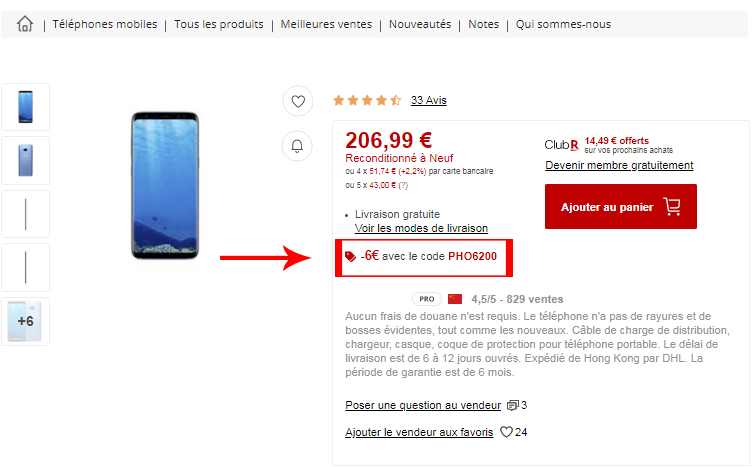
Rakuten Points are additional discounts you can offer your customers, without affecting the face price of your products. Rakuten Points are available to Club R members, who can receive up to 20% extra discount on your products. Ads benefiting from additional Rakuten Points discounts are also featured on the most attractive positions on our platform.
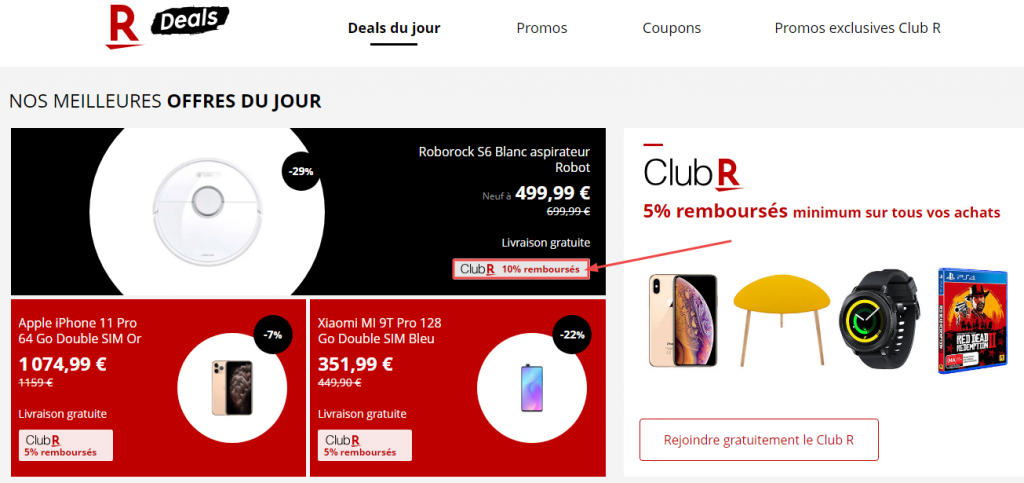
In short, our marketplace is home to over 12,000 professional sellers, free to set their own prices and offer their customers exclusive promotions on their Rakuten e-shop. 13 million loyal, regular buyers are just a click away. Perfect for making your first sales quickly... and growing your online store, directly from our marketplace.
So, are you ready to embark on your e-commerce adventure?
Second Hand: Key Benefits and Tips
The second-hand market is booming. It's worth over 128 billion euros worldwide (source: Tripartie), and more and more buyers are turning to this type of product. After reading this article, you'll know all about second-hand goods, their advantages and how to make the most of them.
What is second hand?
Second-hand products, also called pre-owned or refurbished products, are products that have already been owned by a buyer and are being offered for sale again. In short, we give these items a "second life" by enabling them to be used again by a new buyer.
More and more consumers are turning to pre-owned products every year. In 2023, 52% of French people planned to give second-hand items as Christmas presents, compared with just 20% in 2021. Online sales sites and marketplaces are the preferred place for these purchases. According to Fevad, 45% of online shoppers bought at least one second-hand product in 2023.
These items are therefore rich in opportunities, and many retailers are well aware of this. In fact, 29% of them were already offering second-hand products in France in 2023(ACSEL barometer, 2024).
Advantages of refurbished products
Second hand products offer many advantages, both for sellers and their customers:
Second hand advantages for customers
- Cost savings: these products are generally less expensive than their new equivalents;
- Quality products at lower cost: the lower price allows consumers to discover brand-name or higher-quality products, which the new price might put off;
- A wider variety of products: buying pre-owned allows access to items that are no longer on sale. This is particularly true of fashion items, whose availability is limited in time depending on catalogs;
- Reduced environmental impact: buying a refurbished item reduces its impact at every stage (production, transport, packaging, etc.). What's more, buying second-hand extends the life of products, which drastically reduces the volume of waste generated.
Second hand advantages for sellers
- Better margins: second hand products often generate higher margins, especially on refurbished or reconditioned items. In fact, the cost of putting them back on sale is generally lower than their production cost;
- Attract a new customer segment: as we saw earlier, second hand market is booming, and new types of customer are emerging. Selling this type of item is a way of attracting this clientele;
- Improving brand image: consumers are increasingly aware of brands' eco-responsible initiatives. 72% of French people say they choose environmentally-friendly products (Fevad, 2024). Giving a second life to your products can therefore become an asset for your brand image;
- Better inventory management: putting back on sale products returned by your customers, or unsold items from the previous season, is a good way to limit your inventory while generating additional sales.
How can I sell pre-owned products online?
To sell pre-owned goods online, you have several options:
- Create an e-commerce site: a site dedicated to your products, which you can configure and customize as you wish. This option gives you the advantage of flexibility, but requires significant investment (site construction and maintenance, audience development, search engine optimization, etc.);
- Join a marketplace: your products are sold alongside others on a virtual marketplace. This option has the merit of limiting the effort required on your part for technical aspects and product promotion (the platform takes care of this). What's more, it allows you to benefit from the reputation of the chosen marketplace, making it easier to reach a large number of customers.
At Rakuten, you can combine both approaches. In fact, becoming a Rakuten seller allows you to create your own E-Shop on our marketplace, a fully customizable space dedicated to your store. This means you can keep control of your brand and customize your visuals and customer experience to your heart's content.
Once you've made this choice, it's essential to adapt your strategy to selling second-hand goods online. Consider the following elements in particular:
- Product selection and evaluation: Identify items that are likely to be resold, whether they are returns, end-of-series items, reconditioned items, etc. Make sure that these products meet customer expectations. Make sure these products meet your customers' expectations.
- Reconditioning and reconditioning: If necessary, carry out repairs or reconditioning to ensure that products are in good working order and appearance before they go on sale.
- Effective presentation: Present your products attractively on the e-commerce site or marketplace of your choice. Use detailed descriptions, quality photos, and highlight the economic and environmental benefits of these purchases.
- Customer service: Offer quality after-sales service, with return and warranty policies adapted to second-hand sales, to reassure potential buyers.
Second-hand, at the heart of Rakuten's DNA
At Rakuten, second-hand is a historic pillar of our growth in France, and an essential marker of our identity. Today, one out of every two products sold on our marketplace is refurbished. We have more than 50 million pre-owned product references, and their sales are growing fast. During Black Friday 2023, for example, 43% of products sold were second hand.
To encourage our customers to turn to these products, we have also created the Vision'R badge, a system that rewards second-hand purchases. We were also keen to remove disincentives to the purchase of refurbished products. Our CeRtifié reconditioned program and our buyer protection guarantee customers quality, functional products. These initiatives enable our sellers to reach more and more customers, for the benefit of all.
Do you sell second-hand products, or would you like to start doing so? Then don't wait any longer! Join our 12,000 sellers and embark on the Rakuten adventure!
8th Edition of the ACSEL “Growth and Digital” Barometer: Optimistic and Resilient Merchants in the Face of Crises
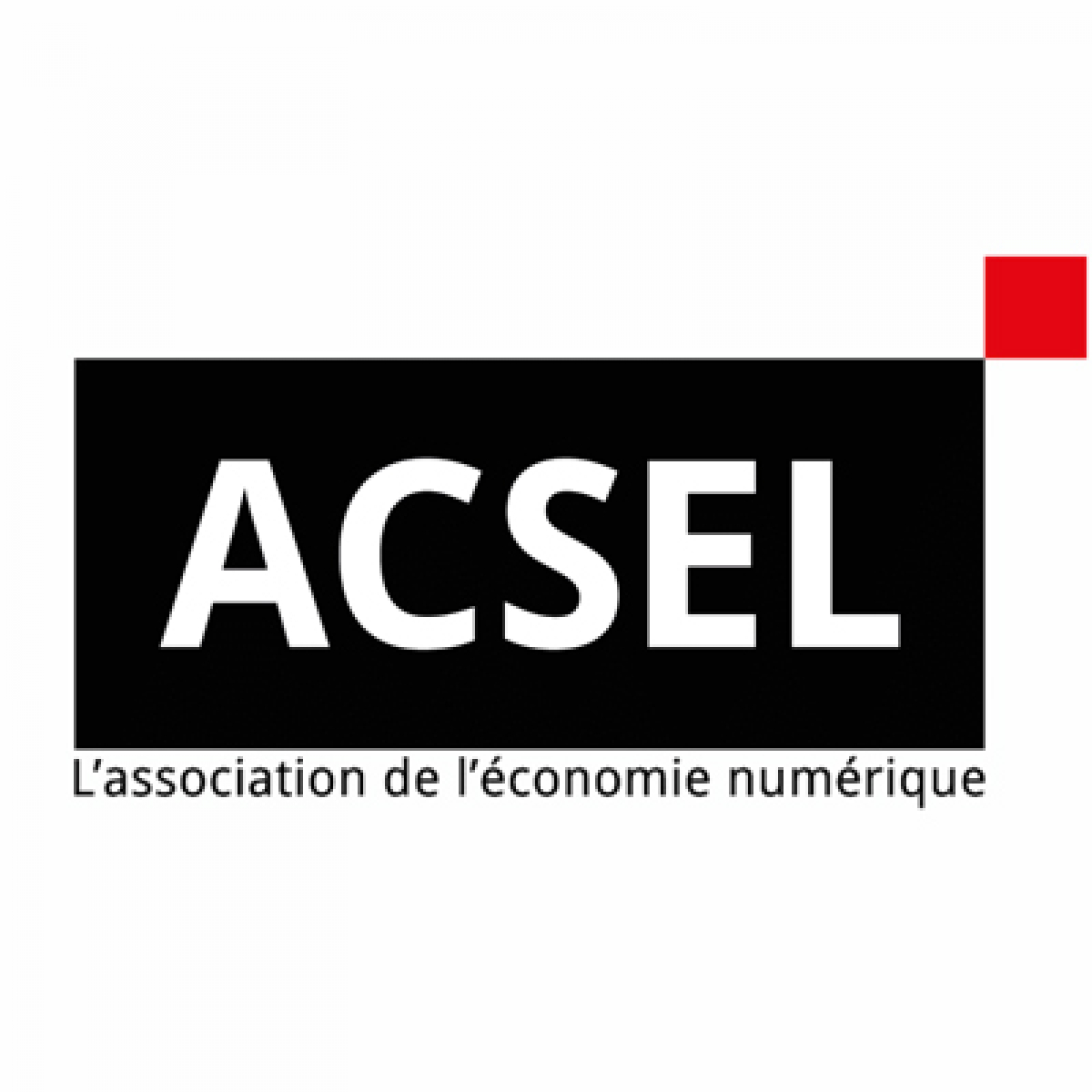 Digital is a key contributor to growth for 62% of them (11 pts in one year)
Digital is a key contributor to growth for 62% of them (11 pts in one year)
Paris, June 19 - In an uncertain economic climate, impacted by inflation and successive crises, French retailers are coping with the situation and displaying a reassuring optimism: almost a quarter of them (22%) are expecting 5% growth in 2024. They plan to develop new offers and services that are increasingly eco-responsible (6 pts in one year). This dynamic is massively driven by digital technology, which is perceived by a very large majority (62%) as the driving force behind their business. Through training and recruitment, they have multiplied the levers they use to drive this digital transformation, and now possess strong digital skills. 28% of retailers have already resorted to generative AI to improve their processes, customer relations or find new sources of growth.
GROWTH, INVESTMENT AND CSR ON TRACK DESPITE THE CRISIS
Optimism is the key word of this edition. Retailers are staying the course, with a very large majority (86%) believing their sales will be stable (48%) or even growing (38%) in 2024. Committed to growth, 64% continue to invest in digital technology despite the crisis. In addition, 68% are opting for eco-responsible offers ( 6 pts), more aware than ever of the impact of their choices on the environment and the expectations of their customers. Nearly a third (29%) have diversified into second-hand products.
Commitment to the planet also climbs to 3rd place among their growth concerns, cited by 57% of respondents (up 7 points), just behind margin and sales.
DIGITAL: A MAJOR CONTRIBUTOR TO GROWTH
Since 2020, digital has become a more important pillar of merchants' development strategies every year. 100% of retailers with more than 20 employees are committed to a digital transformation policy.
Perceived as an opportunity by more than half of merchants (53%), digital is recognized by 62% as a contributor to sales, up 11 points on 2023. Digital not only contributes to their visibility - 78% ( 6 pts) have a website and 84% ( 11 pts) a pro page on social networks - but also to their business, with 13% of merchants generating more than 25% ( 5 pts) of their sales online.
TRAINING AND RECRUITMENT ON THE RISE TO SUPPORT THE DIGITAL TRANSFORMATION OF THE RETAIL SECTOR
Commerce is becoming increasingly digitalized, and retailers are now realizing the benefits. thanks to training, 63% of them now have the digital skills they need to keep pace with the growing importance of digital practices. To complete the digitalization of their business, they are speeding up the recruitment of specific profiles, with 34% (13 pts) having recruited or planning to do so. To do so, they are turning to young talent, first and foremost apprentices ( 5 pts), followed by interns ( 17 pts), who are better able to master digital tools and are more committed to digital transformation. In this respect, companies with fewer than 20 employees stand out: 75% ( 21 pts) have turned or plan to turn to young talent.
Logically, this rise in skills goes hand in hand with a drop in the need for support, down 7 points in one year. Banks are more than ever the preferred partners for supporting digital transformation (34%, up 7 pts).
Finally, more mature and better armed, retailers are now in a better position to combat the cyber threat, with 79% ( 7 pts) of them having the tools and solutions to protect their business and their employees.
AN APPETITE FOR DIGITAL, LEADING RETAILERS TO PUT IA INTO PRACTICE
Far from being an exotic technology that retailers are observing from afar, Artificial Intelligence is already at the heart of their thinking: 63% believe it saves time ( 4 pts) and 61% believe it can improve distribution ( 7 pts).
in fact, 1/3 of them have taken the subject head-on, making more specific use of generative AI on a regular or occasional basis. Large companies make even greater use of generative AI (39%), mainly to create personalized content (30%), improve operational efficiency (26%) or manage customer relations (10%). However, 24% of merchants have yet to identify the significant impact of this technology.
METHODOLOGY
The study was carried out by ACSEL x IPSOS, based on 350 telephone interviews with a sample of 1 to 4999 employees representative of the French retail sector in 2024.
How to calculate your e-commerce shipping costs?
It’s no secret that e-commerce logistics have a cost. This includes inventory management, reverse logistics and, in this case, order delivery. While satisfying consumer expectations by reducing delivery times and offering multiple delivery methods is vital to the success of your business, so too is breaking even.
In this article, we’ll explain how you can easily and efficiently calculate your shipping costs to make your business as attractive as it is profitable
Calculating shipping costs: factors to consider
Before, during and after the shipment of your parcels, these components are worth considering:
1/ Delivery methods
Offering consumers a choice is an excellent way of getting them to validate their basket in fine. On your side, not all delivery methods have the same impact on your budget. Express delivery is more expensive than standard delivery, just as Point Relais delivery is cheaper than home delivery.
2/ Package weight and dimensions
The larger your sale items, the more expensive they are in terms of delivery and packaging costs. Adapt your pricing accordingly.
3/ Packaging costs
Whether your parcel is large or small, quality packaging is important to reduce the risk of unpleasant surprises upon receipt by the buyer. And, by extension, fewer product returns.
4/ Geographical area to be delivered
Sending parcels within France, to French overseas territories, to Europe and beyond does not have the same cost. To reduce the budgetary impact of your shipments, don’t hesitate to adjust your delivery charges according to the geographical zones to be delivered. Customs charges can also be added to the equation. Think about it!
5/ Insurance costs
No one is immune from theft or loss of a parcel. To avoid disappointment, it’s essential to insure your merchandise according to its value.
6/ Potential returns
Non-conforming or damaged product, purchase error… According to the Hamon law, from the date of receipt of the order, the buyer benefits from a 14-day retraction period. If the return form is not directly included in your parcel, you are obliged to reimburse the shipping costs incurred by the customer.
7/ Fuel surcharges
Whether you make your own deliveries or use the services of a carrier, rising fuel prices can have an impact on your expenses. Be vigilant, and react accordingly to minimize your losses as much as possible
Define your shipping costs
What is the average cost of a shipment for your company? Answering this question will help you define your shipping costs.
The simplest formula to apply is as follows:
Average cost of a shipment = cost of transport packaging insurance rate of return cost of order preparation.
Of course, this cost varies (sometimes significantly) according to the geographical area to be serviced. Segmenting your shipping costs according to the areas to be delivered is a good strategy for calculating your shipping costs clearly and precisely.
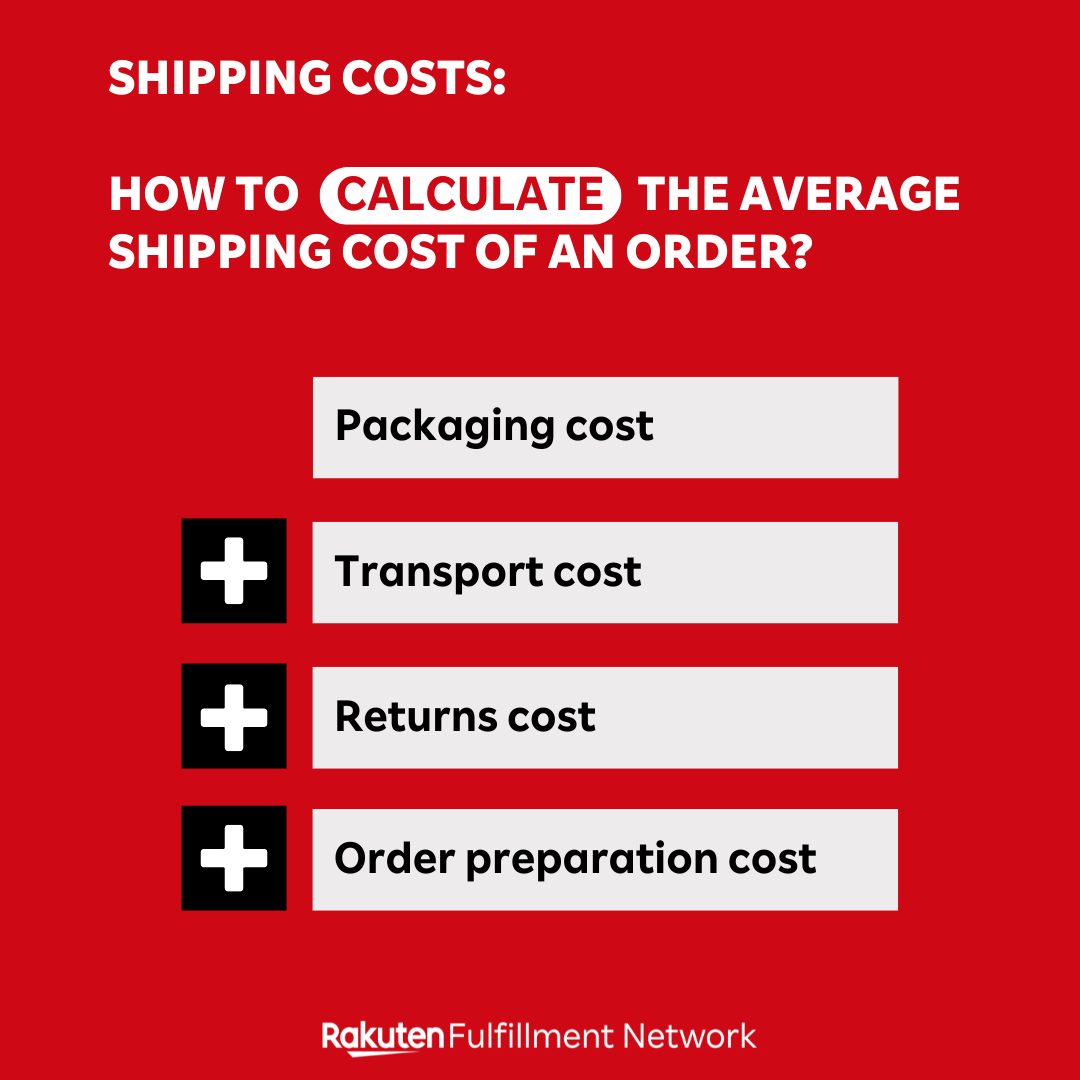
Free shipping, advantages and disadvantages
To attract more consumers or increase the average shopping basket, the temptation for entrepreneurs to offer free shipping is often great. There are several advantages to offering free shipping to your customers:
- More purchases and a larger average basket: customers tend to spend what they’ve saved on shipping costs;
- Fewer abandoned baskets;
- Improved customer loyalty.
Provided, of course, that this strategy enables you toincrease your profitability, and not the other way around. In fact, a free shipping strategy exposes you to certain disadvantages:
- Additional costs and therefore a reduced margin on your sales;
- Free shipping encourages product returns, which can lead to more complex logistics operations and additional costs;
- Your customers get used to free shipping. Your customers have become accustomed to free shipping, so a return to paid shipping may not go down well with them.
Based on this principle, the most effective approach is to calculate a threshold at which you can offer consumers free shipping:
Shipping cost = average basket – average product cost – shipping cost.
So, for example, if your average basket is 30 euros, the average cost of a product is 10 euros and the cost of shipping is 5 euros, the minimum order amount to benefit from free shipping is :
30 10 – 5 = 35 euros
To generate even more interest among consumers, you can also use this calculation during specific periods, defined by yourself or by the shopping season calendar, which includes Sales, Black Friday and Christmas, among others
How can you optimize your e-commerce shipping costs to maximize your profitability?
There are 3 key points to get you started:
- Offer customers attractive delivery options;
- Negotiate attractive rates with carriers;
- Regularly update delivery rates.
There is an alternative that will save you both time and money: outsource your e-commerce logistics. Whether you decide to outsource your order management to a logistics provider, or to outsource your entire e-logistics operation, our Rakuten Fulfillment Network solution will give you all the information you need to get started.

Making your business shine is one of our priorities, which is why we offer to take charge of your e-commerce strategy. All with clear, no-hidden-cost pricing for your shipping costs, merchandise storage or, among other things, the multiplication of your acquisition channels.
Find out more about our turnkey method:
Transparency of delivery costs: an important parameter
Whatever shipping cost model you choose for your store, it’s important that it’s legible and that your customers can understand it effortlessly. This means:
- Opting for a relatively simple shipping system: limit yourself to a maximum of two or three categories, and reduce the conditions for each category (minimum purchase, distance, etc.);
- Clearly indicating shipping costs to your customers early on in the purchasing process: this will limit the number of customers who abandon their shopping baskets at the last stage.
Being transparent about your shipping costs saves you a lot of inconvenience and limits your customers’ frustration, which ultimately helps to increase their loyalty and your sales.
Cashback Study 2024: Growing Popularity and Misconceptions
IPSOS STUDY FOR RAKUTEN FRANCE
Paris, June 25 - Purchasing power is a priority for many French people faced with inflation. In the search for effective ways to save money, cashback - enabling shoppers to recoup a portion of their spending - has become widespread in France.
But what about the actual use and perception of this solution by the French? Rakuten France, in partnership with IPSOS, questioned them to understand their habits and reservations regarding this method.
HALF OF FRENCH PEOPLE ACTIVELY USE CASHBACK TO BOOST THEIR PURCHASING POWER
Loyalty programs are firmly rooted in French habits. 87% of French people are enrolled in at least one loyalty program, and 98% of them use at least 1 regularly.
However, loyalty is concentrated on a limited number of programs. Indeed , 78% regularly use fewer than 5 programs, and 32% use only one or two.
At the same time, cashback, already well-established in the United States for many years, is seeing increasing adoption in Europe. Today, cashback is one of the essential methods for maximizing savings: 48% of French people use at least one cashback program .
Cashbackhas become a decisive criterion for 42% when choosing ane-retailer, and is viewed positively by 63% of the French . This figure rises to 70% among young people aged between 16 and 34. They invest most of their earnings in products in the fashion, cultural leisure, home equipment and high-tech categories.
THE VALUE OF CASHBACK EARNINGS IS UNDERESTIMATED BY THE FRENCH, AND IS THE MAIN OBSTACLE TO THEIR TAKING UP CASHBACK
Although the French are interested in cashback, 33% still prefer discount coupons and promotions, which are well known to 94% of them.
What holds the French back the most are questions about the real benefits of cashback. 41% of those who don't want to use it feel they wouldn't really gain financially, while 37% admit they don't know enough about how it works.
Similarly, 48% of the French still doubt the liquidity of rewards, and believe that cashback can only be used on the site that awards it. a further 20% believe that cashback systems still require a paid subscription.
However, once the way it works has been clearly explained and the benefits highlighted, almost half of those questioned (49%) are interested, underlining the importance of raising awareness on the subject.
" Cashback faces many preconceived ideas, butwe'retaking on the challenge of removing the obstacles that still exist.Contrary to certain beliefs, programs such as Club R are free of charge, and offer very substantial cashback of up to 35% of the purchase price. A real boost for French people's wallets," comments Kevin Delli - Head of e-Merchandising & Loyalty & Brand at Rakuten France.
CASHBACK: A DIFFERENTIATING LEVER FOR E-TAILERS, POPULAR WITH SHOPPERS
Far from preconceived ideas about the benefits of cashback, Rakuten France's Club R stands out for its generosity . The program is designed to boost the purchasing power of its members, offering everyone rewards on purchases made from 12,000 partner e-tailers and brands, across all product categories. The system centralizes discounts, in line with French consumers' desire not to multiply their loyalty programs.
Already popular with 13 million members, Club R is free and non-binding. It entitles members to up to 35% cashback on purchases made on the platform. On average, Rakuten shoppers gain nearly 900 euros in purchasing power every year. And contrary to what some French people think, the kitty can not only be used throughout the site, but also transferred directly to a bank account.
" The study shows us that cashback, already positively perceived by many French people, is a real differentiator for brands and e-tailers. By launching our free loyalty program in 2018, we wanted to reward our users with a program that was accessible to all and generous. We are all the more proud to increase our users' purchasing power in the current economic climate, while creating positive network effects for our e-retailers within a single digital shopping mall," concludes Armando Pastor, Marketing & C2C Director at Rakuten France.
METHODOLOGY
The Rakuten - IPSOS study was carried out online among a national sample of 2,500 individuals representative of the French population aged 16 and over.
How can I sell on Rakuten as a professional?
12,000: the number of professional sellers who have chosen to boost their online sales with our Rakuten platform. Rakuten is the only marketplace that empowers sellers and their customers, without competing with them. It's also a platform with no hidden fees and transparent pricing. And so much more!
Are you a professional tempted by the adventure of e-commerce? But you don't know how to go about it, or who you can trust? Discover our guide to start selling your products or services on Rakuten... And get your business off the ground.
On the program:
- Why sell on a marketplace?
- Why choose Rakuten?
- What are the prerequisites for joining Rakuten?
- How do I start selling on Rakuten?
- How much does it cost to sell on Rakuten?
- How to develop your sales on Rakuten?
Why sell on a marketplace?
Marketplace: definition
Imagine a large digital shopping mall. Each store inside represents a vendor. Buyers, meanwhile, can move from store to store on the platform... without ever disconnecting. Thisisthemarketplaceprinciple . And that's exactly what Rakuten offers.
Rakuen is a marketplace that facilitates contact between buyers and sellers. On our e-commerce platform, professionals can sell their products, much to the delight of consumers: 52% of customers in France say they prefer to make all their purchases on a single site (Yougov 2021). And 92% of buyers plan to make increasing use of marketplaces in the future (Mirakl 2022)!
Sellers are also attracted to marketplaces, thanks to their simple, cost-effective operation. Most marketplaces offer a monthly subscription model, with commissions or percentages on sales. Each e-shop creator can then advertise products for sale. Some platforms, such as Rakuten, even offer to take charge of inventory management, storage and shipping .
Advantages of the marketplace model
Behind this online sales model, the advantages are numerous. These include
- Increasedvisibility and credibility: every marketplace has an established user base and traffic. Sellers can therefore benefit from an effortless increase in visibility and credibility. At Rakuten, for example, over 15 million unique visitors each month visit the e-shops of partner sellers... and 13 million loyal buyers put their trust in them!
- Lower marketing and communication costs: e-merchants in a marketplace benefit from integrated marketing tools (product promotion, targeted advertising, recommendation of similar products) and an existing website (without having to develop their own technological infrastructure and communicate on it). The result? Savings, reduced acquisition costs and improved ROI!
- Secure transactions: the platform guarantees the smooth running of transactions and data management. Choosing to sell on a marketplace means choosing maximum security... which has a major impact on customer satisfaction and loyalty.
- A complementary sales channel: joining a marketplace doesn't mean giving up your traditional sales channel (physical store, e-commerce site, social shopping, etc.). It simply means multiplying additional sales opportunities! The marketplace is a choice compatible with your other channels, to amplify your reach on the Internet. So, have you thought about combining marketplace and e-commerce?
Why choose Rakuten?
Now you know the advantages of digital marketplaces. Now you're ready to make a choice from among the many marketplaces dedicated to web sales professionals... And if you're still hesitating, here are the reasons to put your trust in Rakuten:
- No competition with sellers : our priority is you. We don't sell our own B2C or B2B products. Unlike many marketplaces, we don't compete with our e-merchants by selling our own products. 100% of our efforts are dedicated to your success and the growth of your e-shop.
- Free offers and services: our starter offer is free, with no monthly fees and no minimum sales volume. Professionals on our platform also benefit from free services to make their day-to-day work easier. Click&collect, e-shop creation, digital training, invitations to exclusive events, support from an e-consultant... These services are included in their subscription, with no additional hidden costs.
- Regular payment: marketing your products online, and not receiving any money from sales... That's the worst situation for an e-tailer. Fortunately, at Rakuten, our sellers are spared! They receive regular payments twice a week.
- Simplified logistics: unlike traditional e-commerce sites, many marketplaces like Rakuten offer order management, storage, packaging and shipping services. Sellers can then concentrate on what they do best: selling.
- A loyal and committed community : 15 million unique monthly visitors, 13 million loyal buyers, 12,000 sellers... At Rakuten, we're committed to bringing people together, uniting them and engaging them. Would you like to be part of this community and attract regular customers? Then you've come to the right place:
What are the prerequisites to join Rakuten?
All e-commerce professionals are welcome on our Rakuten platform. That is, provided you have :
✅ A registration number (SIREN) and an Intracommunity VAT number
✅ Documents proving the company's name and address
✅ Documents proving theidentity of the company's legal representative
✅ A catalog that complies with Rakuten's compliance and security policy .
Do you meet these 4 requirements? Then you can join our 12,000 sellers. We'll tell you how to get your e-shop off the ground right after.
How do I start selling on Rakuten?
Once you've met the 4 prerequisites listed above, you can join our marketplace. It couldn'tbe easier: go here to register.
Fill in the registration form, and your account will be validated within 48 hours. Once validated, you'll be able to :
- Put your products online
- Customize your delivery options and shipping costs
- Set up your e-shop
- Activate payment
To guide you through each of these 4 steps and start selling on Rakuten, here's our video tutorial (subtitled in english) :
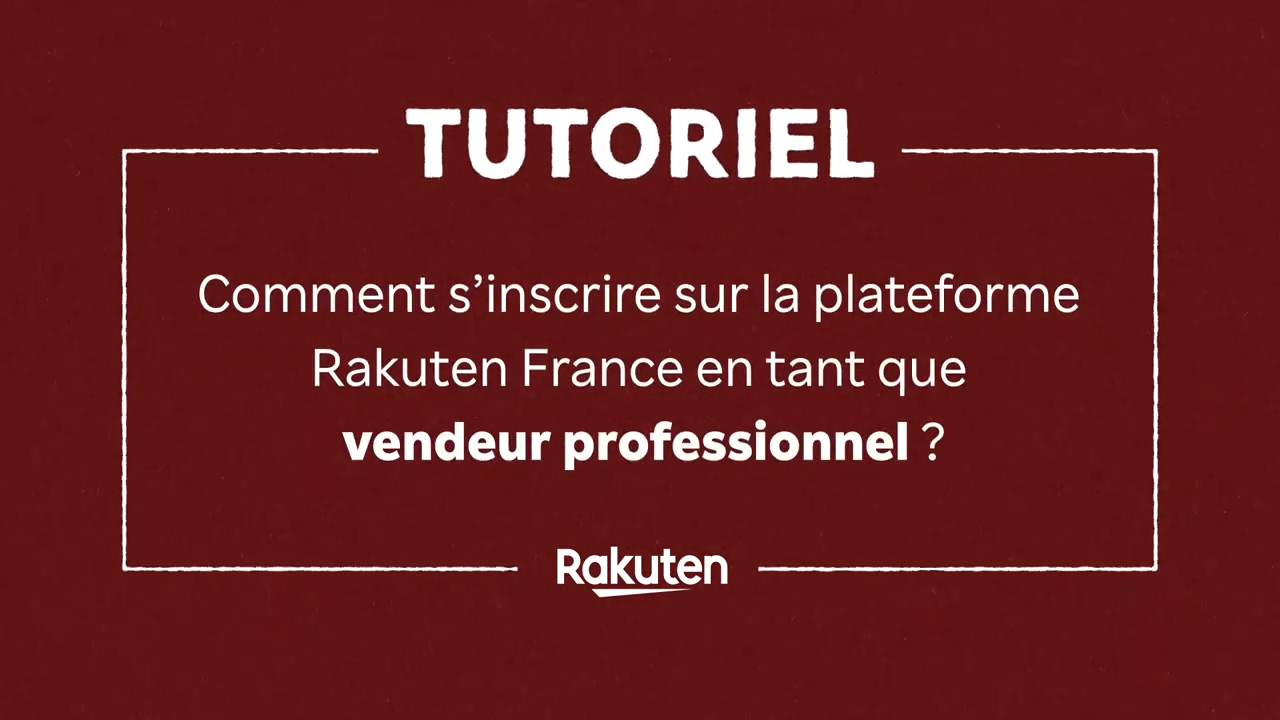
How much does it cost to sell on Rakuten?
Transparent pricing and attractive commissions: that's what we offer all our partner sellers. Indeed, selling on our marketplace is a financially advantageous solution:
- Transparent pricing
- Clear commissions, with no hidden fees
- No account opening fees
- Subscriptions to suit your needs
We offer two subscription formulas:
- The Starter pack :from €0/month and commissions from 14%. It's the ideal package for getting started in e-commerce and testing sales from a marketplace.
- The Expert pack: from €49/month and commissions from 8%. This is the formula best suited to building a long-term business.
In addition to these offers, management fees vary according to the value of the item sold, starting at €0.15 for products of €10 or less. Click here to findout more .
And that's all there is to it. Let's get selling!
How to develop your sales on Rakuten?
After the creation phase, it's time to accelerate: how do you develop your sales? Increase your growth, boost your ROI and win the loyalty of a large number of customers on Rakuten?
Here are our 4 tips for going from "beginner seller" to "successful professional seller":
1. Optimize your catalog and product sheets
30%of Internet users have already abandoned a shopping cart because of an incomplete product description (source: Shotfarm Product Information Report). To avoid losing sales opportunities, it's essential to take care of your product sheet and catalog. To optimize it, remember to :
- Use keywords for natural referencing (SEO)
- Write a detailed description (conditions of use, product technical details, etc.)
- Include a clickable button (CTA) to encourage purchase
- Add high-quality visuals (static, contextualized product photos, videos, etc.)
- Insert social proof, thanks to customer reviews
- Highlight certain offers or products in your catalog, according to the highlights of the year
Discover all our tips for creating an exceptional product sheet on Rakuten.
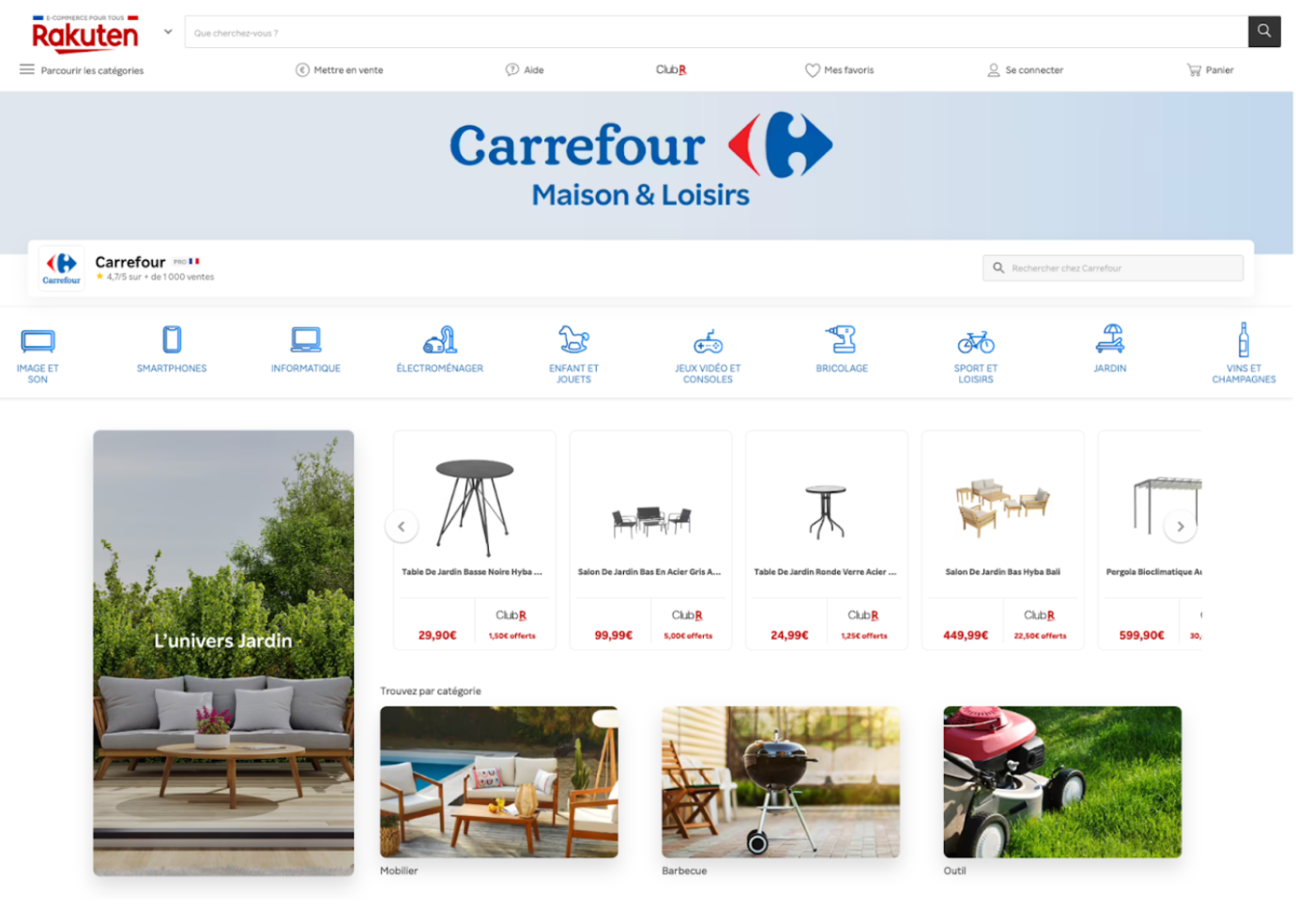
2. Competitive delivery
The presence of shipping costs is a reason for cart abandonment for 62% of e-buyers, according to a Sendcloud study (2023 ). What's more ,44% of buyers don't want to wait more than two days to receive their order (Statistia, 2022) .
Today,thepriority for e-tailers is toreduce parcel delivery times (and the associated costs!). To achieve this, they need reliable logistics partners like Rakuten Fulfillment Network.
If you're a user of Rakuten Fulfillment Network, our e-commerce logistics service, you can outsource your entire supply chain and ensure fast service for your customers .99.8% of orders placed before 2pm are delivered within 24 hours!
3. Sponsor your ads
To maximize your performance, have you considered sponsoring your ads? Sponsoring puts your products in the spotlight in a marketplace. For example, with Rakuten Ads, sponsorship rapidly improves the visibility of your e-boutique and your products .
The principle is simple: our algorithm selects the most relevant keywords to promote your products. If a potential buyer types in a pre-defined keyword, your product appears first in the search results.
You define the budget for your campaign. Once it's exhausted, it can't be exceeded. You benefit from greater visibility on our marketplace, and increased traffic and sales. Perfect for boosting your growth!
4. Offer attractive promotions
80%ofconsumers are more inclined to buy a new brand if they have access to a coupon or promo code (source: RetailMeNote annual report, 2021). And 46% of consumers even abandon their shopping baskets if a promotional code doesn't work .Promotions are a real lever for acquisition, but also for loyalty: you can't afford to miss out!
By becoming a professional seller on Rakuten, you have several options open to you, such as Rakuten Coupons and Rakuten Points.
Rakuten Coupons are personalized discount vouchers valid only on your ads. They are automatically placed in strategic locations on Rakuten, such as the RakutenDealspage and on product sheets.

RakutenPointsare cashback that members of our free loyalty program (Club R) can receive after each purchase. Club R members can earn upto20% of the purchase price in cashback.
Activating Rakuten Points campaigns is useful for offering additional discounts without affecting the face price of your products. On your side ,youincrease the average basket, while improving your customer acquisition and retention strategy. What more could you ask for?
Sales professionals: ready to join Rakuten?
Marketplaces are growing exponentially. In 2020 alone, these platforms recorded 81% growth, twice that of traditional e-commerce sites (Mirakl, 2021). And the good news is that sellers on these platforms are also benefiting from this performance: increased visibility, traffic, sales and turnover... All while saving on logistics and marketing costs.
Would you like to take advantage of all these benefits? Start selling today on Rakuten, and join our 12,000 sellers :






